Victorian dining rooms are the epitome of grandeur and sophisticated entertaining, designed to impress guests with opulent details and rich materials. This historical style, originating from the 19th century, emphasizes ornate craftsmanship, dramatic color palettes, and a sense of formality. Creating this look involves layering textures, incorporating intricate patterns, and selecting furniture that makes a bold statement. From towering ceilings adorned with medallions to walls covered in elaborate paper, every element contributes to an atmosphere of refined elegance. These spaces are not just for eating; they are stages for memorable gatherings, reflecting a legacy of grand hospitality and timeless design.
1. Victorian Dining Room with Deep Wall Colors
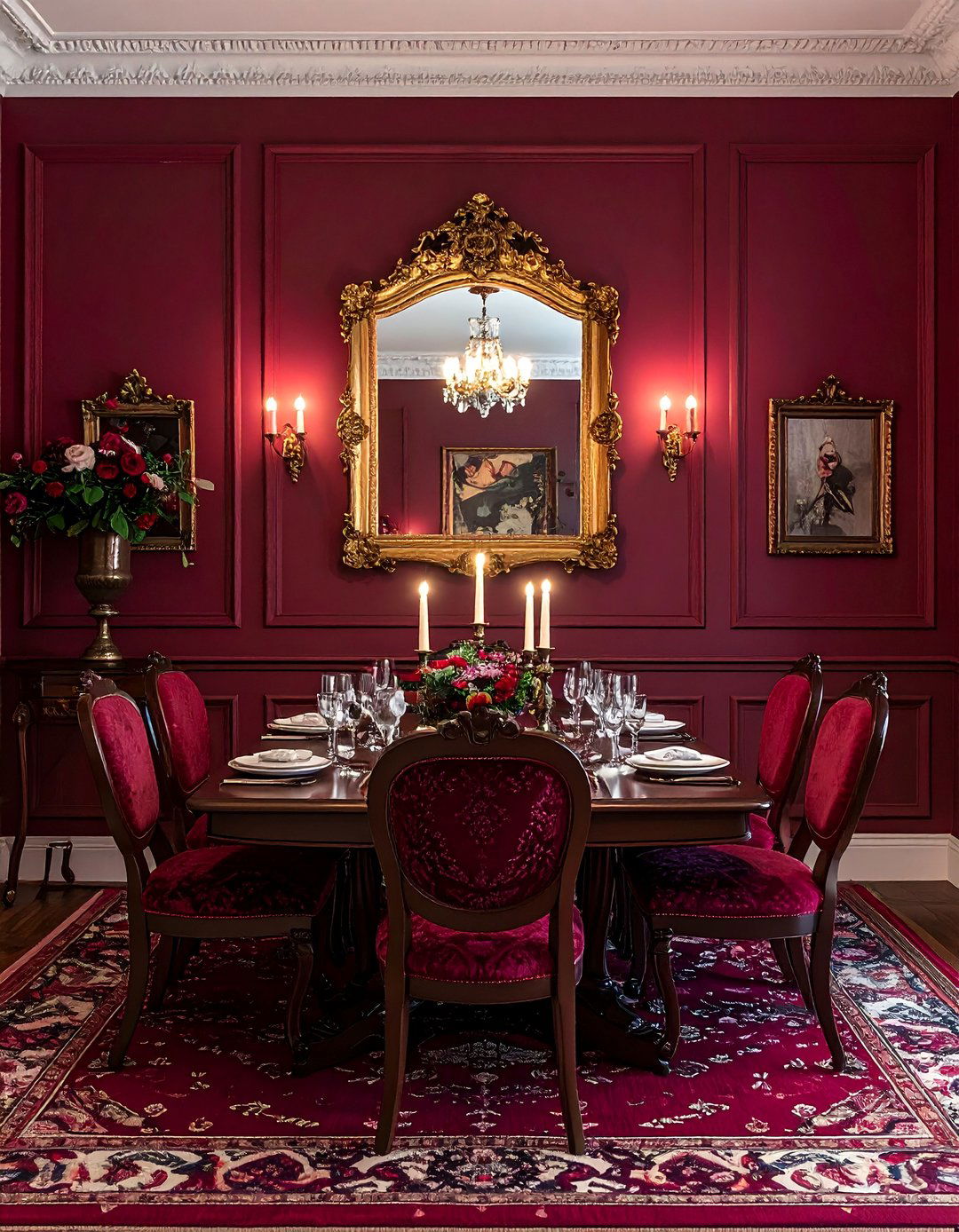
To establish an authentic Victorian atmosphere, consider using deep, saturated wall colors that create a sense of drama and intimacy. Shades like burgundy, forest green, navy blue, or even a rich chocolate brown were popular during the era and provide a stunning backdrop for ornate furniture and gilded accents. These dark hues absorb light, making the room feel cozy and formal, perfect for evening dinner parties. This bold color choice envelops the space in a luxurious ambiance, highlighting the intricate details of woodwork and decorative elements, which might otherwise be lost against a paler wall, instantly transporting guests to a bygone era of elegance.
2. Victorian Dining Room with an Ornate Crystal Chandelier
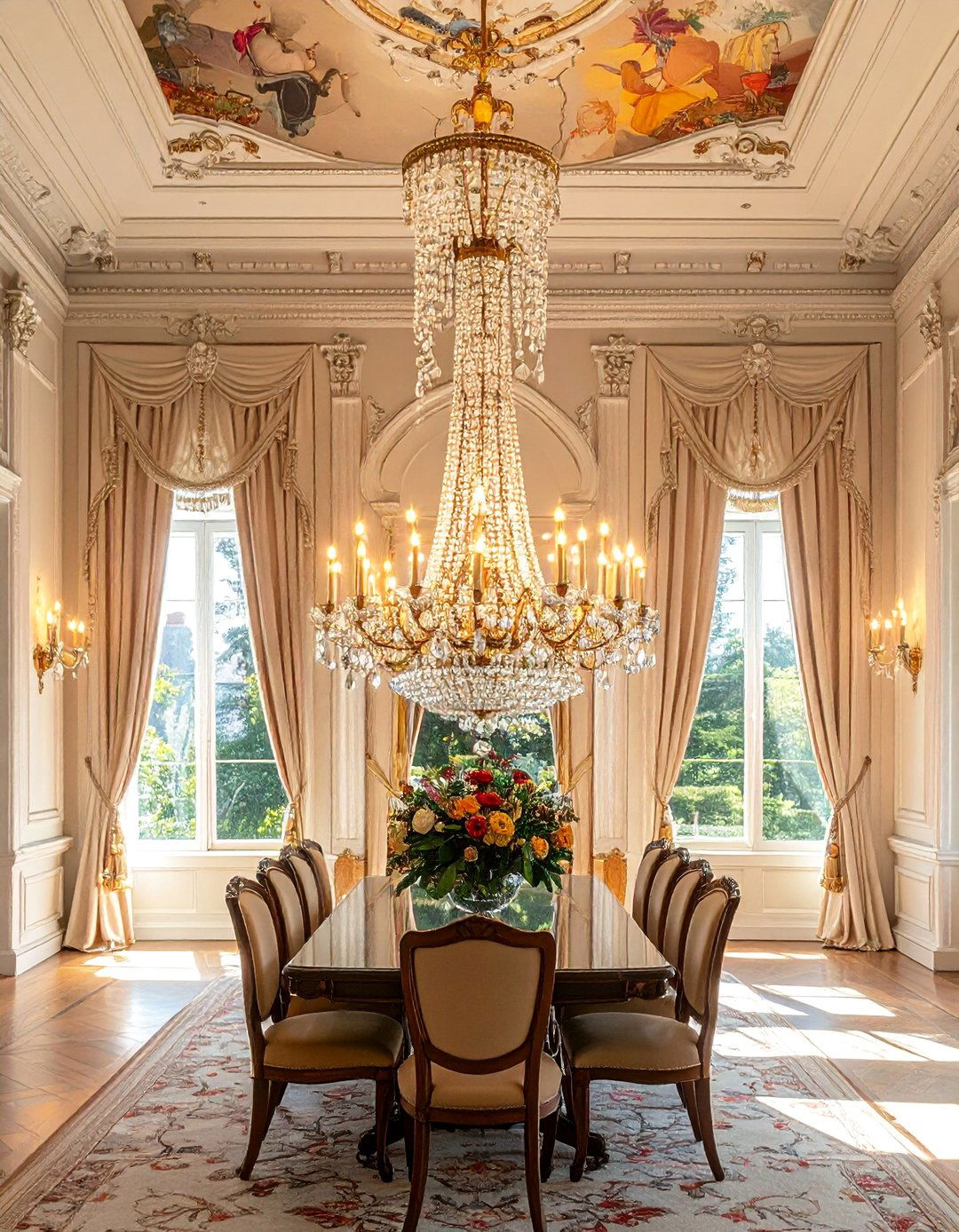
A magnificent crystal chandelier is a non-negotiable centerpiece in any grand Victorian dining room. Serving as the primary light source, its function extends beyond illumination to become a dazzling focal point that exudes opulence. Look for fixtures with multiple tiers, intricate brass or bronze metalwork, and an abundance of cascading crystals that refract light beautifully. Hanging low over the dining table, it not only casts a warm, inviting glow but also enhances the perceived height of the ceiling. This single element can define the room's character, symbolizing the wealth and status that were central to Victorian-era design principles and formal entertaining.
3. Victorian Dining Room with a Carved Mahogany Dining Table
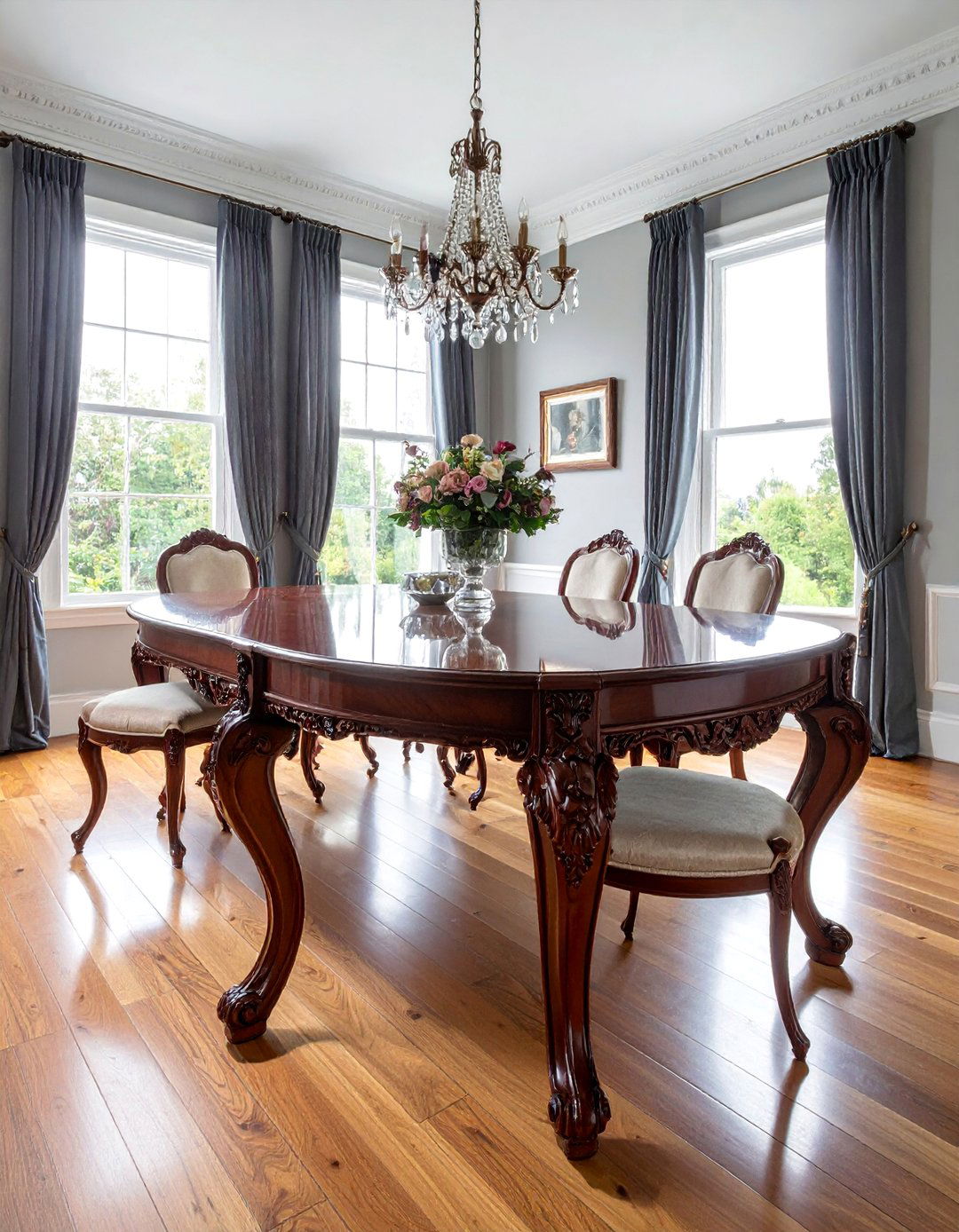
The dining table is the heart of the room, and in a Victorian setting, a solid, heavily carved mahogany table is the ultimate statement piece. These tables are renowned for their robust construction, deep reddish-brown tones, and intricate details, such as cabriole legs, claw-and-ball feet, or elaborately carved pedestals. A large, imposing table not only provides ample space for hosting grand dinners but also acts as a sturdy anchor for the entire room's decor. Its polished surface reflects the soft light from the chandelier, adding to the room's warm and inviting atmosphere while showcasing the superior craftsmanship of the period.
4. Victorian Dining Room with Upholstered High-Back Chairs
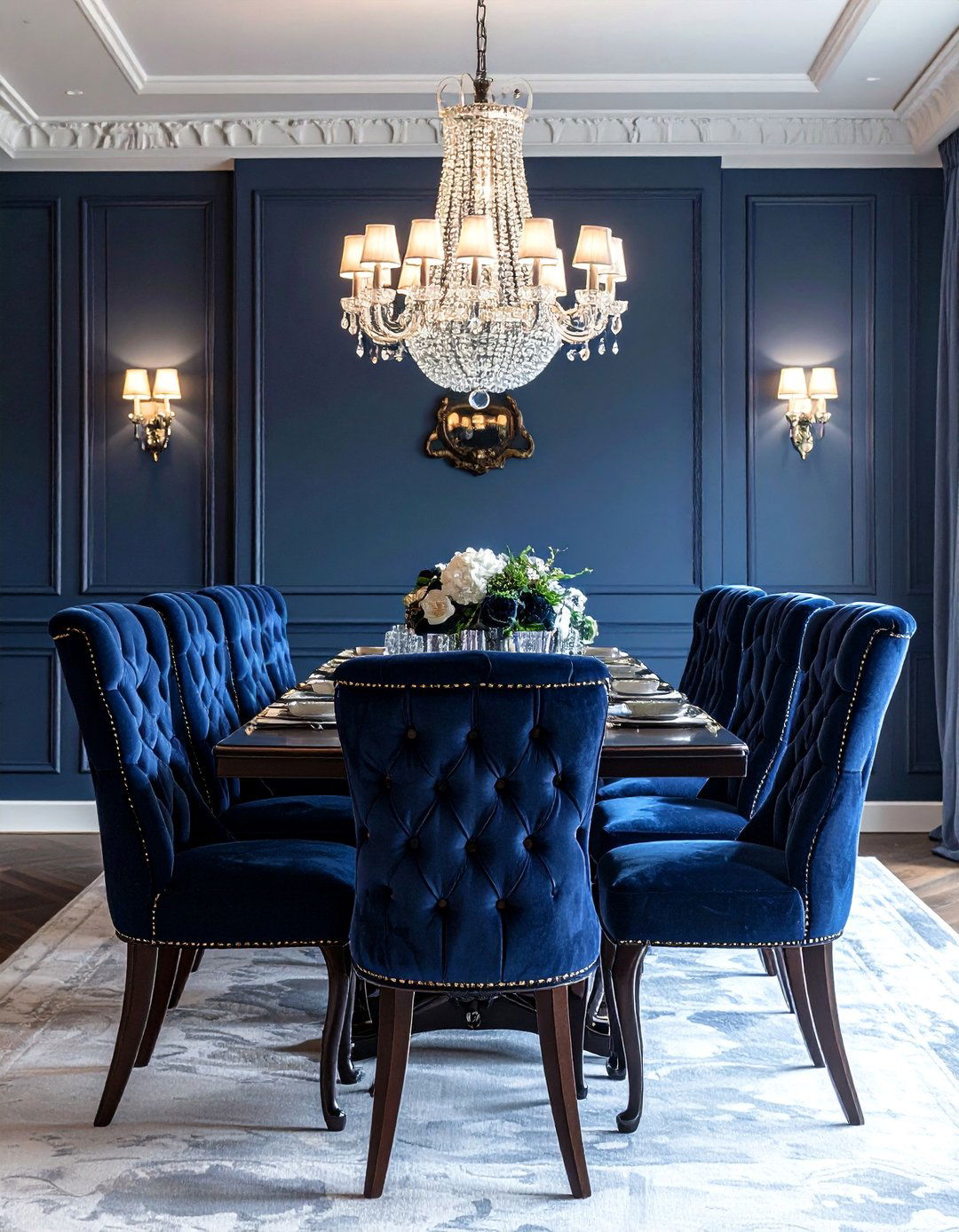
Surrounding the grand dining table, high-back upholstered chairs add both comfort and a sense of regal authority. These chairs were designed to be imposing, with tall backs that provided support and created a formal, enclosed feeling around the table. Look for chairs with frames made from dark woods like walnut or mahogany, often featuring carved details that echo the table's design. The upholstery should be luxurious; think rich velvets, brocades, or embossed leather in deep jewel tones. Button-tufting is a classic detail that adds texture and reinforces the opulent aesthetic, ensuring guests dine in absolute comfort and style.
5. Victorian Dining Room with Elaborate Damask Wallpaper
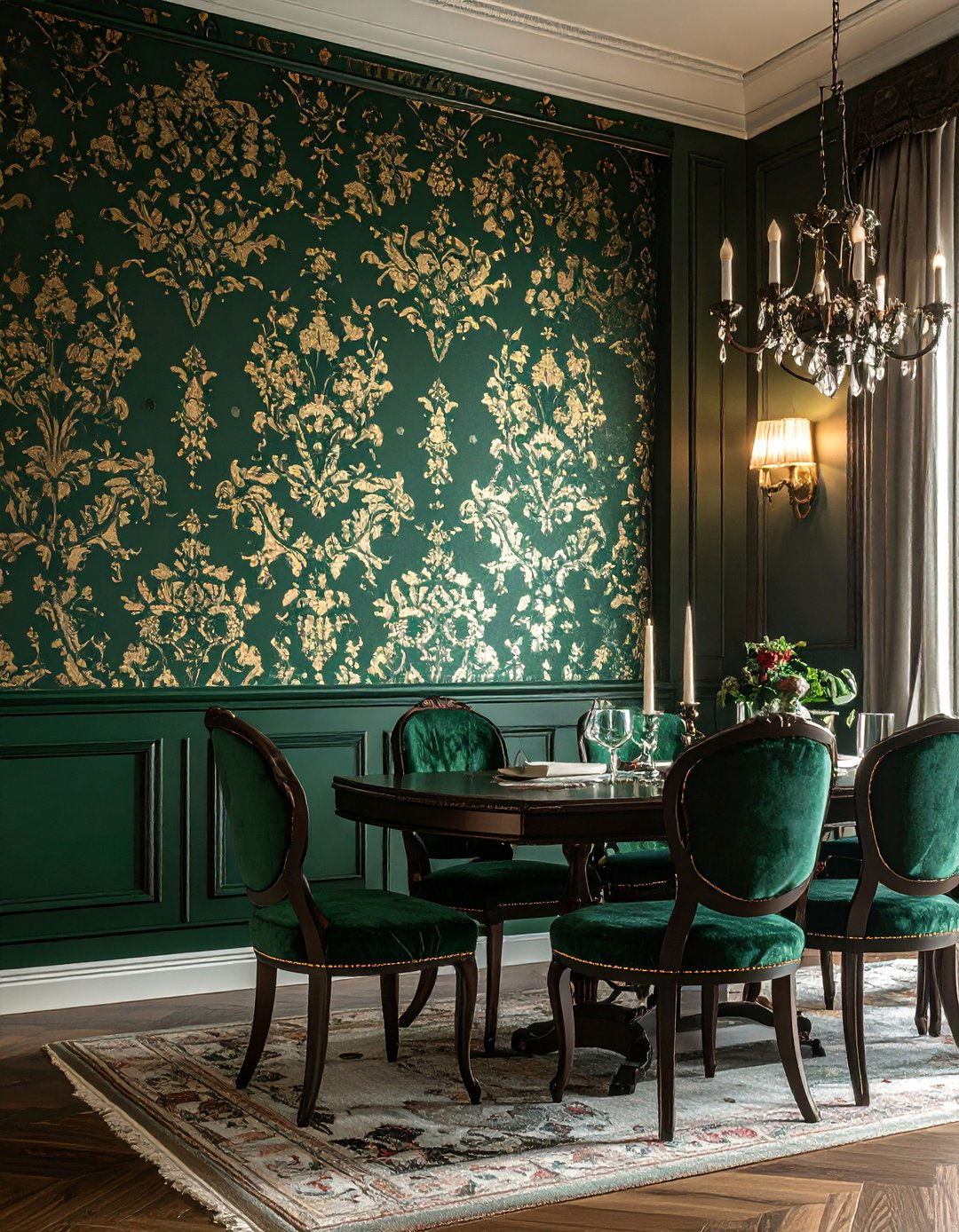
Wallpaper was a key decorative element in Victorian interiors, used to add pattern, texture, and color to a room. For an authentic dining space, choose an elaborate damask or flock wallpaper. Damask patterns feature intricate, woven designs that have a subtle sheen, catching the light to reveal complex floral or scrolling motifs. Flock wallpaper offers a raised, velvety texture that adds a tactile richness to the walls. These intricate patterns, often in deep, moody colors, create a sophisticated and immersive environment, wrapping the room in a layer of historical elegance and visual interest that painted walls alone cannot achieve.
6. Victorian Dining Room with a Grand Carved Sideboard
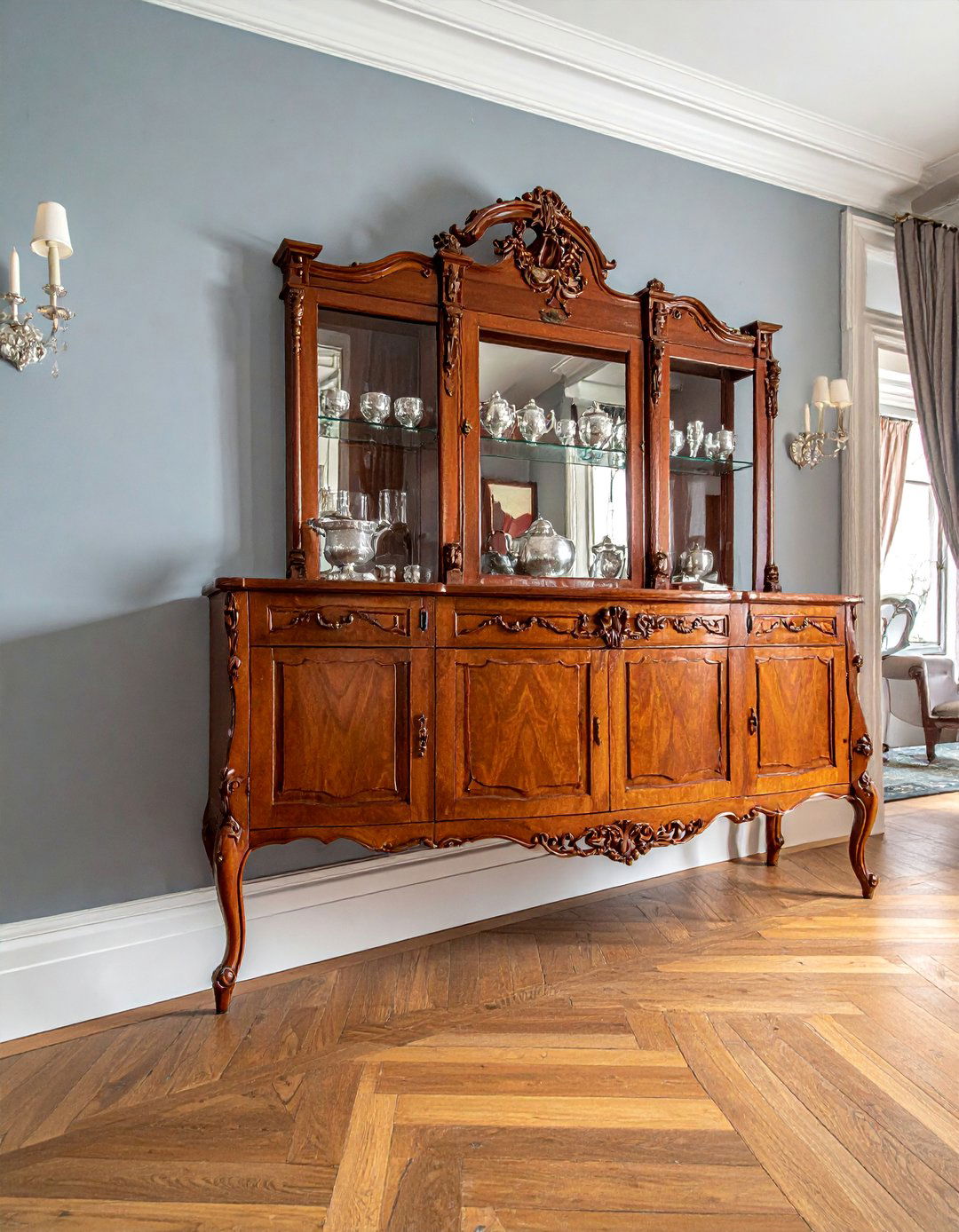
A grand sideboard, or buffet, is an essential piece of furniture in a Victorian dining room, providing both practical storage and a surface for serving. Typically crafted from the same dark wood as the dining table, such as mahogany or oak, these pieces are heavily ornamented. Look for sideboards with intricate carvings, a tall, mirrored back, and ample storage in cabinets and drawers below. The mirrored back was designed to reflect the candlelight and crystal on display, amplifying the room's opulence. This functional yet decorative piece is perfect for showcasing polished silver serving dishes, decanters, and fine china.
7. Victorian Dining Room with Luxurious Velvet Drapery
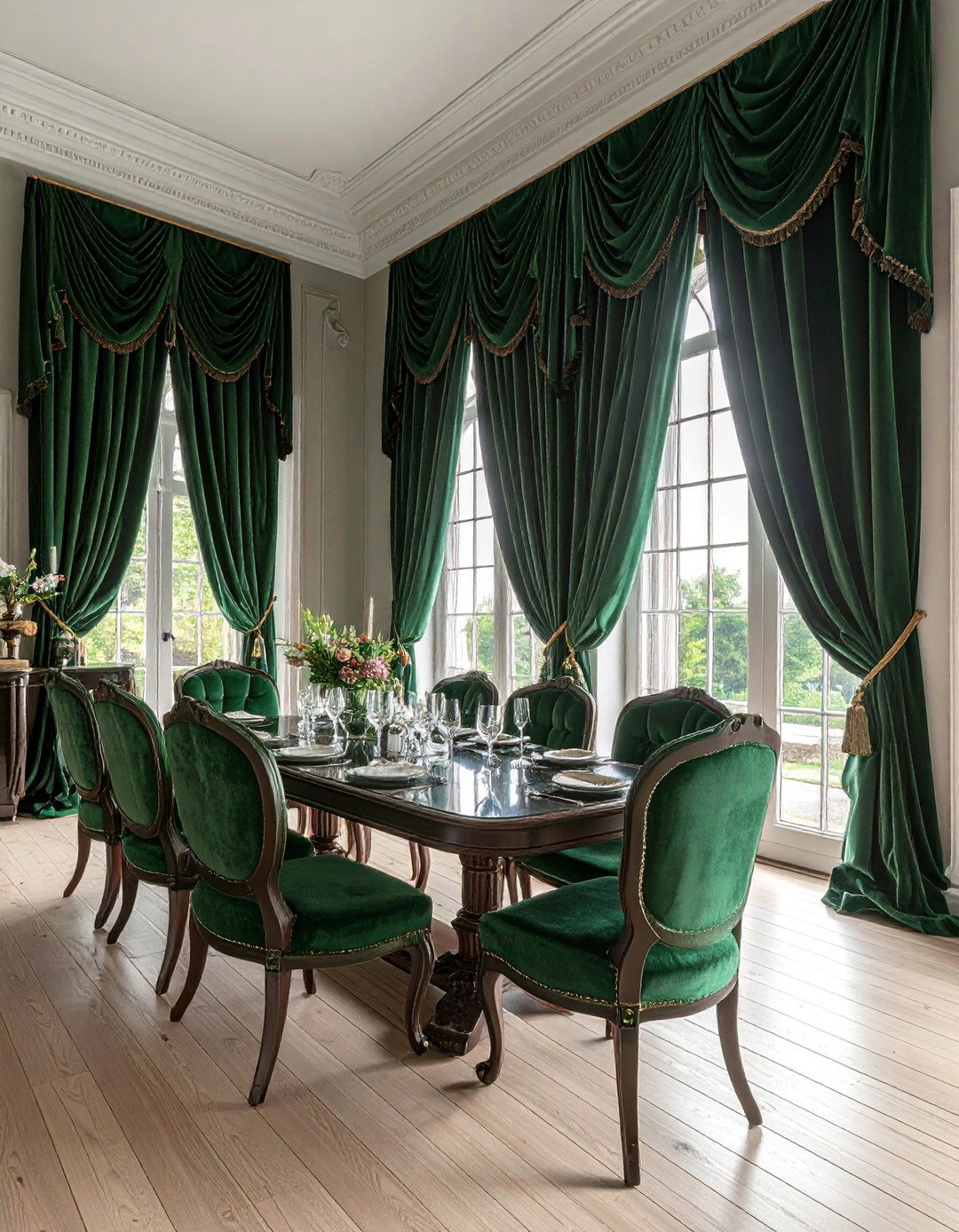
Window treatments in a Victorian dining room should be heavy, luxurious, and dramatic. Floor-to-ceiling drapery made from rich velvet or thick brocade is the ideal choice to frame windows and add a layer of texture and warmth. These curtains should be hung from a substantial wooden or brass rod and feature elaborate details like thick tassels, braided tie-backs, and a decorative pelmet or valance at the top. The heavy fabric not only enhances the room's opulence but also serves a practical purpose by blocking drafts and providing privacy, contributing to the intimate and enclosed atmosphere so characteristic of the era.
8. Victorian Dining Room with a Decorative Ceiling Medallion
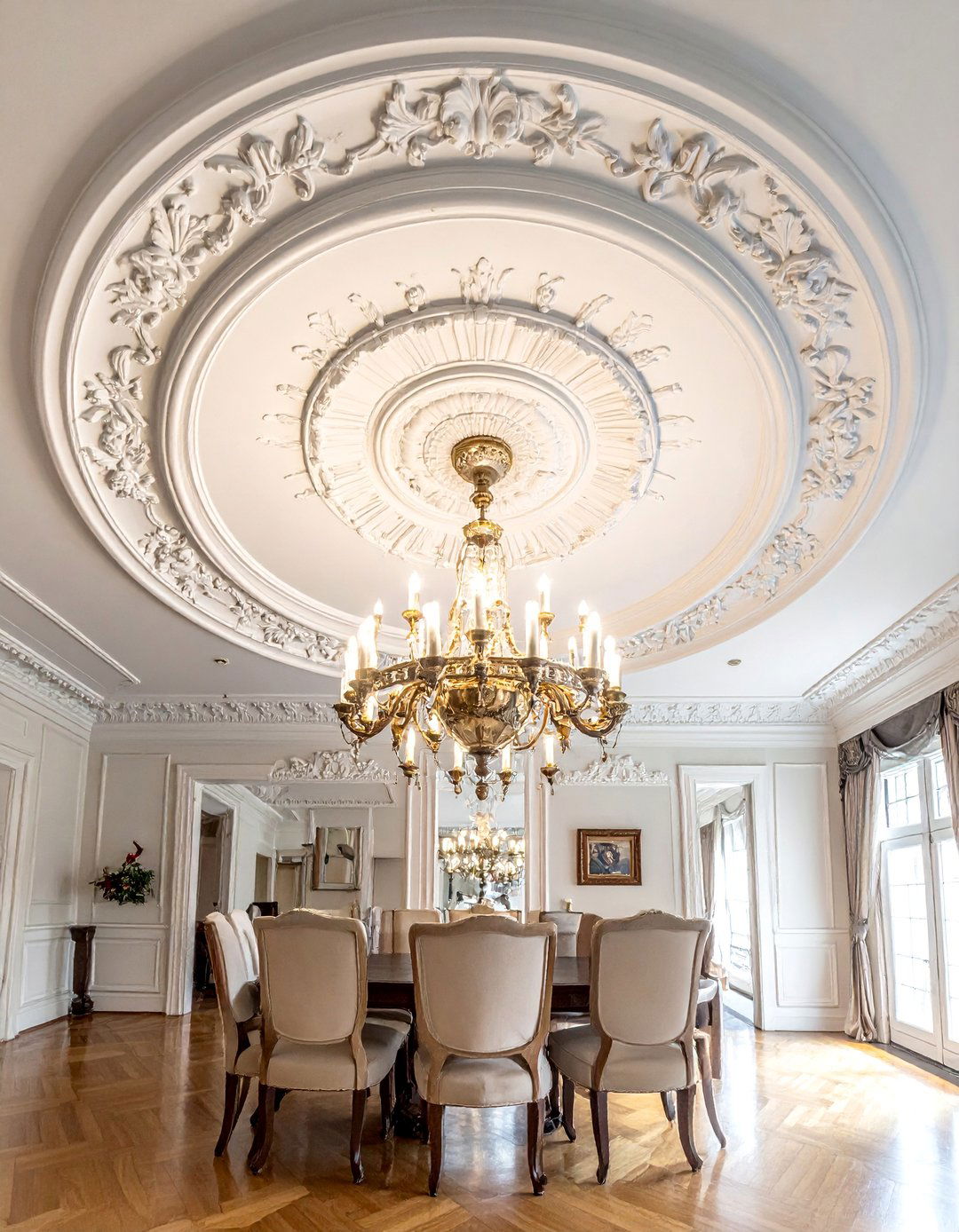
To draw the eye upward and properly frame a grand chandelier, a decorative ceiling medallion is a must-have architectural detail. These ornamental plasterwork pieces were a standard feature in Victorian homes, adding a layer of intricate detail to an often-overlooked surface. Ranging from simple concentric circles to elaborate acanthus leaf or floral designs, the medallion provides a finished, purposeful look to the ceiling. It serves as an anchor for the room's main light fixture, integrating it seamlessly into the overall design scheme and reinforcing the commitment to ornate decoration from floor to ceiling, truly completing the grand aesthetic.
9. Victorian Dining Room with Gilt-Framed Mirrors
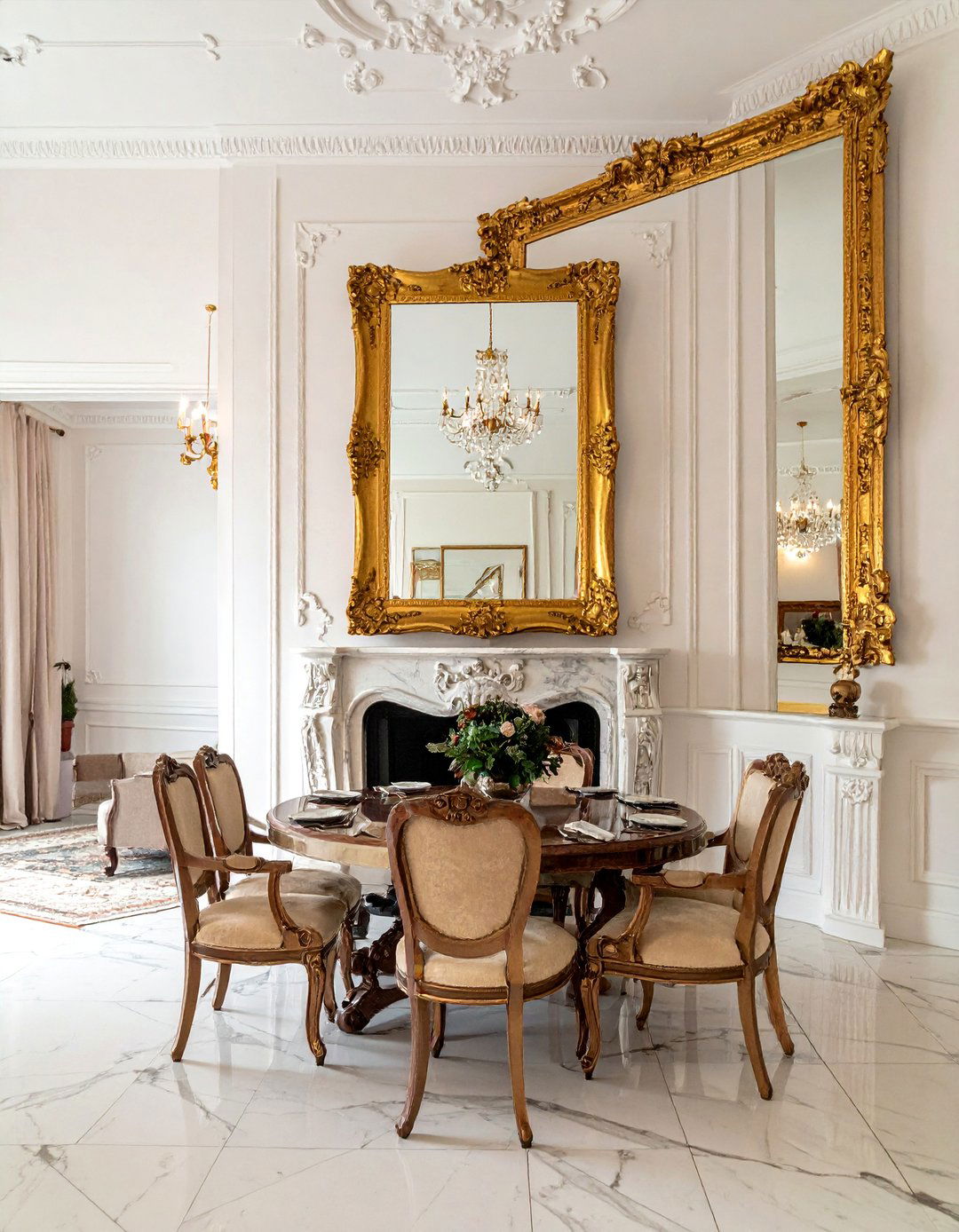
Large, ornate mirrors in gilded frames are a classic Victorian design element that can dramatically enhance a dining room. Placed strategically, a mirror can make the space feel larger and brighter by reflecting the light from the chandelier and any nearby windows. Typically hung above a fireplace mantel or a sideboard, these mirrors feature elaborate frames with intricate carvings of scrolls, leaves, or shells, finished in a rich gold leaf. This touch of metallic glamour adds to the room's opulence and provides a stunning visual accent, breaking up the deep colors of the walls while reflecting the beauty of the surrounding decor.
10. Victorian Dining Room with a Persian Area Rug
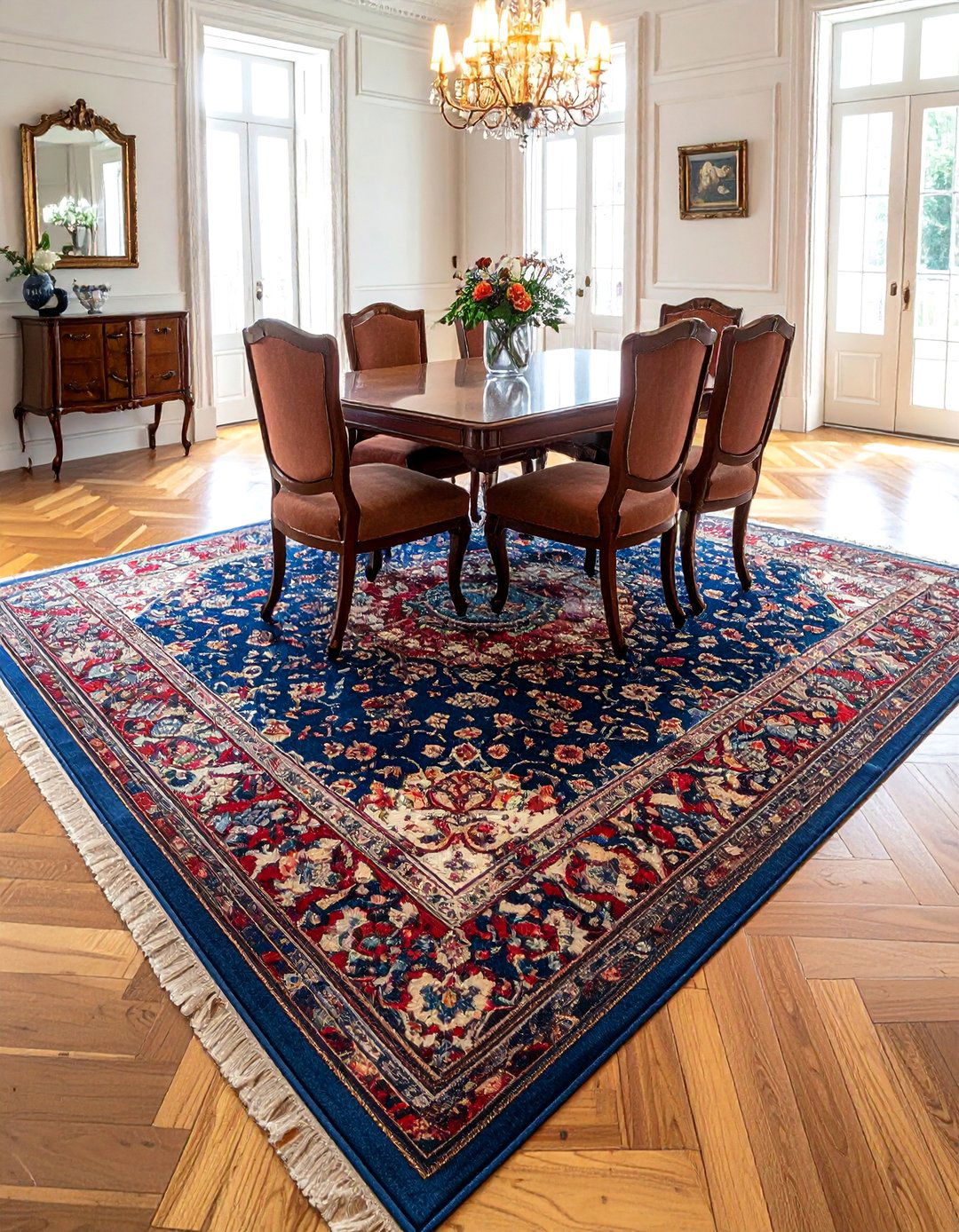
Underfoot, a richly patterned Persian or Oriental area rug is the perfect foundation for a Victorian dining room. These rugs introduce complex patterns and a sophisticated color palette that complements the dark wood furniture and deep wall tones. The intricate designs, often featuring floral motifs and medallions, add a layer of warmth, texture, and artistry to the space. A large rug placed under the dining table and chairs helps to define the dining area, anchor the furniture, and absorb sound, contributing to a more intimate and comfortable atmosphere for conversation during meals. This element adds a sense of history and well-traveled worldliness.
11. Victorian Dining Room with a Fireplace Mantel
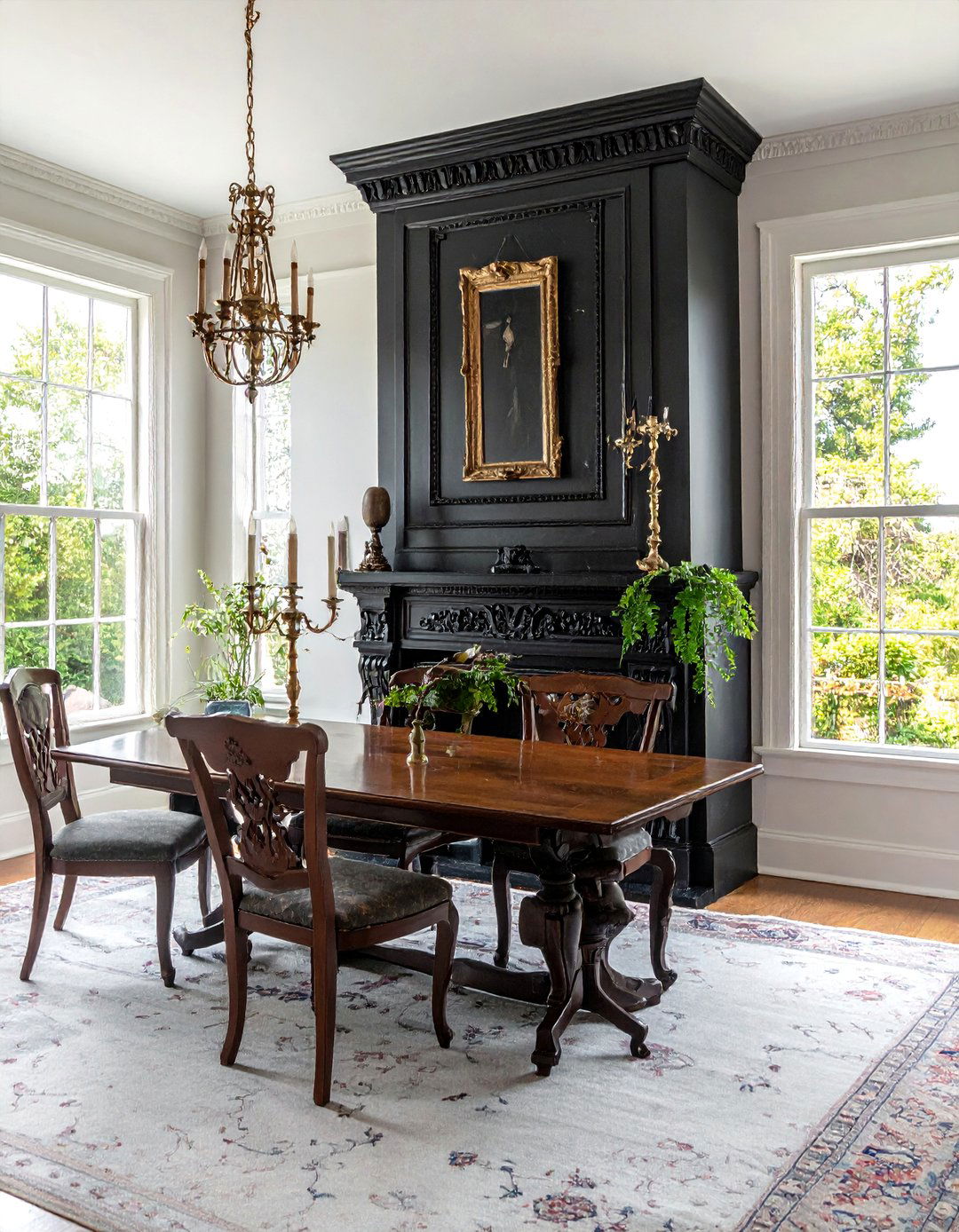
A fireplace was the heart of the Victorian home, and in the dining room, it served as both a heat source and a magnificent decorative focal point. An ornate mantelpiece, crafted from marble, slate, or elaborately carved wood, provides a commanding presence. The mantel shelf offers the perfect stage for displaying a decorative clock, a pair of candelabras, or fine porcelain vases, further enhancing the room's formal character. Gathering around the warmth of a crackling fire after dinner was a common practice, making the fireplace an essential element for creating an authentic, cozy, and inviting entertaining space that feels both grand and comfortable.
12. Victorian Dining Room with Detailed Wood Wainscoting
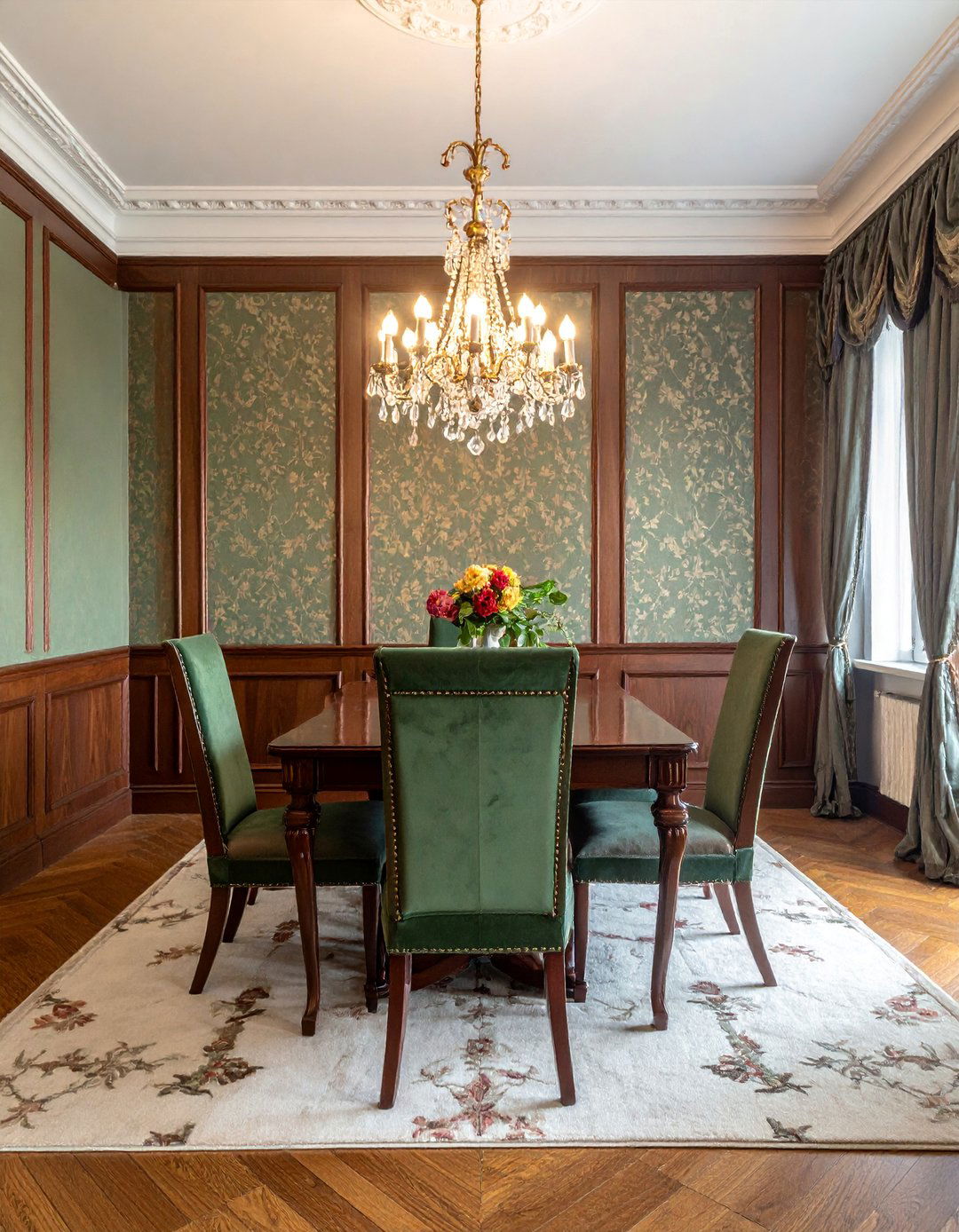
Adding detailed woodwork, such as wainscoting or paneling, to the lower portion of the walls is a hallmark of Victorian interior design. Typically made from dark, polished woods like oak or mahogany, wainscoting adds architectural interest and a sense of permanence to the dining room. It protects the walls from scuffs from chairs while introducing another layer of texture and craftsmanship. The top of the wainscoting creates a natural division, often capped with a decorative chair rail, allowing for the use of ornate wallpaper above. This feature enhances the room's formal structure and contributes to its rich, layered aesthetic.
13. Victorian Dining Room with Layered Wall Sconces
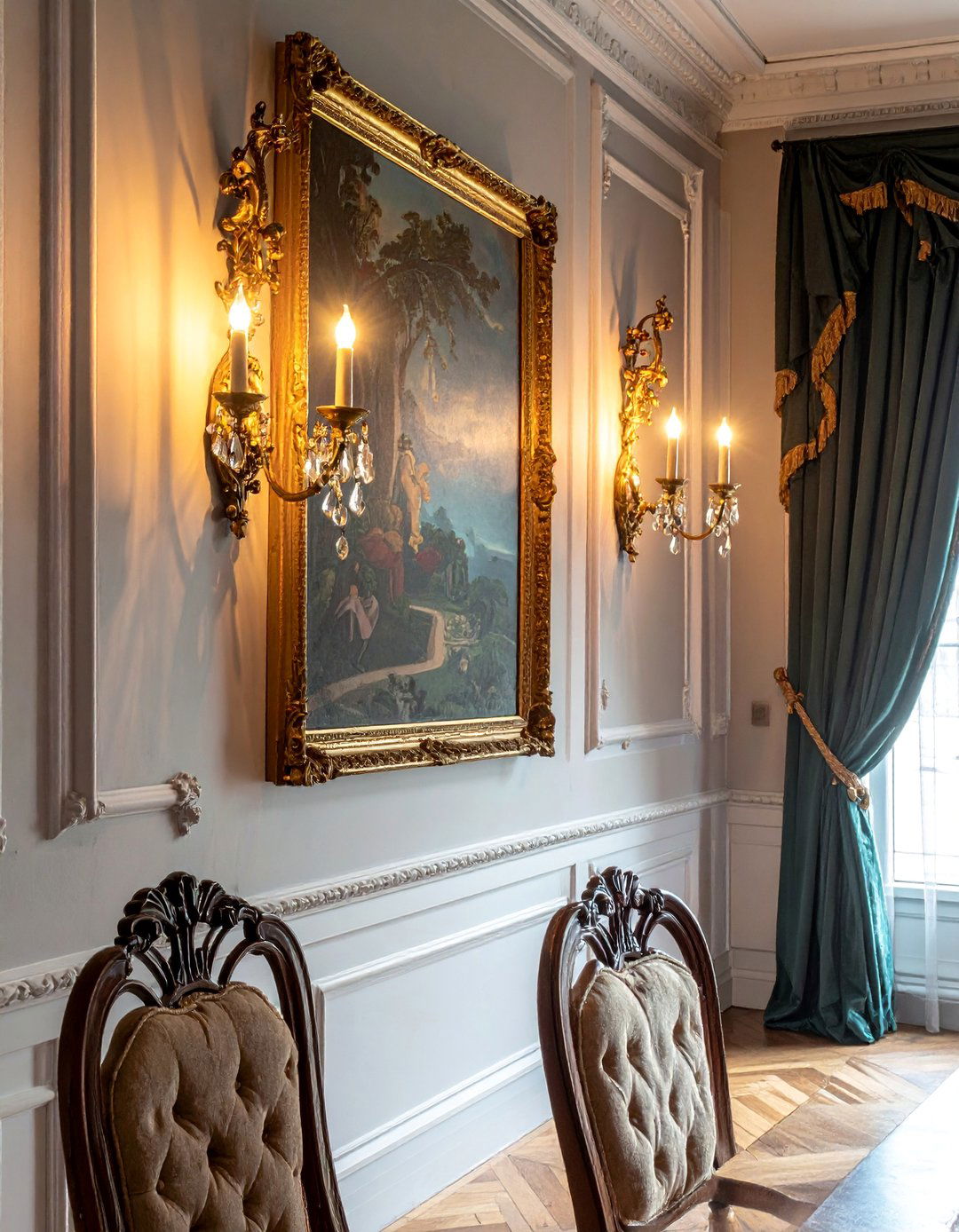
To supplement the light from a central chandelier and create a truly atmospheric setting, incorporate layered lighting with wall sconces. These secondary light sources, typically installed in pairs, add a soft, ambient glow that enhances the room's intimate feel, especially for evening gatherings. Choose sconces that match the style of the main chandelier, featuring materials like aged brass, bronze, or crystal. Placing them on either side of a sideboard, mirror, or large piece of artwork helps to highlight these features while casting a warm, flattering light throughout the space, ensuring every corner of the room is beautifully illuminated.
14. Victorian Dining Room with a Formal China Cabinet
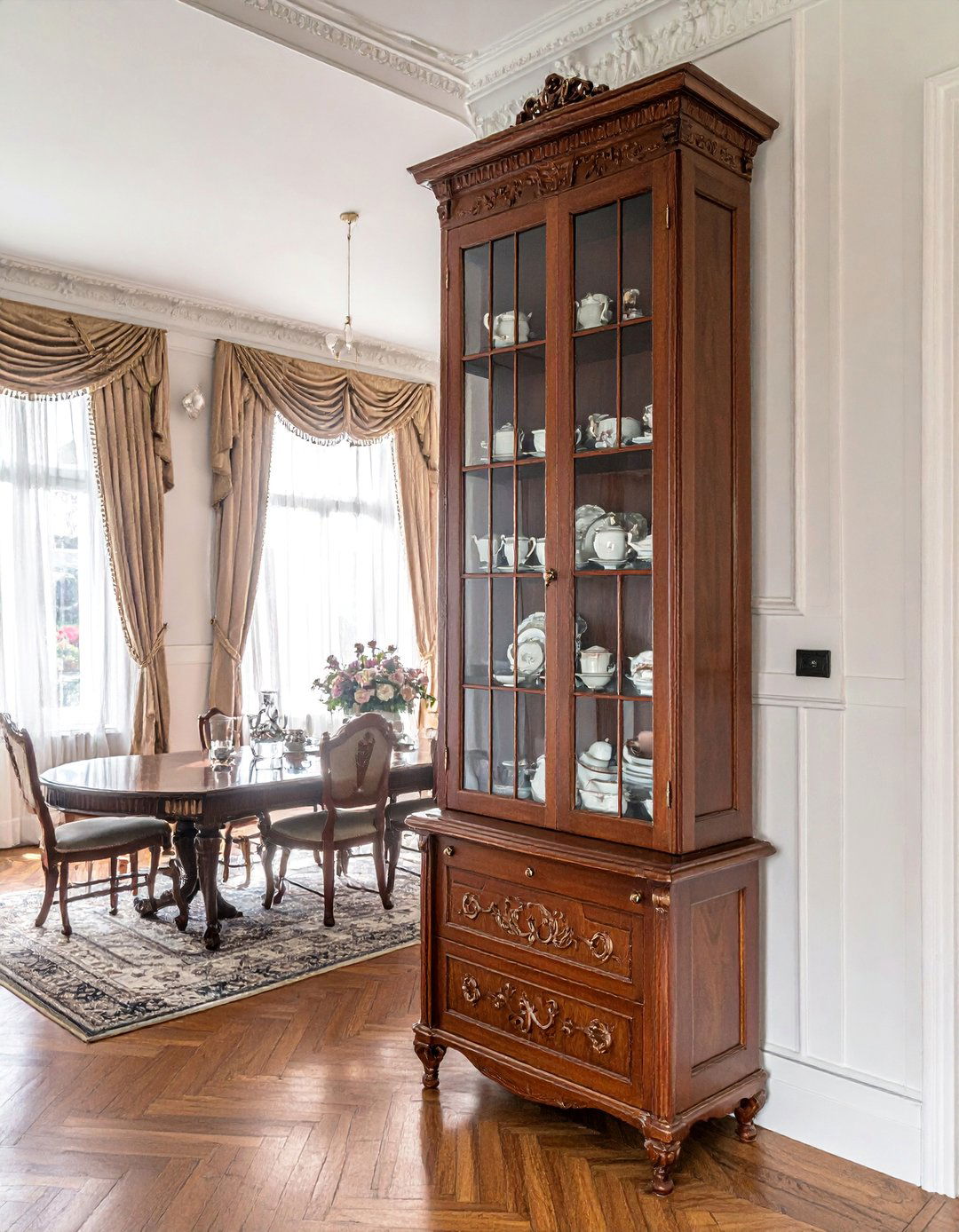
A dedicated china cabinet or vitrine is an elegant and practical addition to a Victorian dining room, used to display and protect treasured porcelain, crystal, and silverware. These cabinets often feature glass-front doors, sometimes with intricate wooden fretwork, allowing the contents to be admired while keeping them dust-free. Typically crafted from a dark, polished wood to match the other furniture, a china cabinet adds height and a sense of formality to the room. By showcasing your finest tableware as a decorative element, you reinforce the room's purpose as a space for sophisticated entertaining and display a sense of family pride.
15. Victorian Dining Room with Polished Silver Tableware
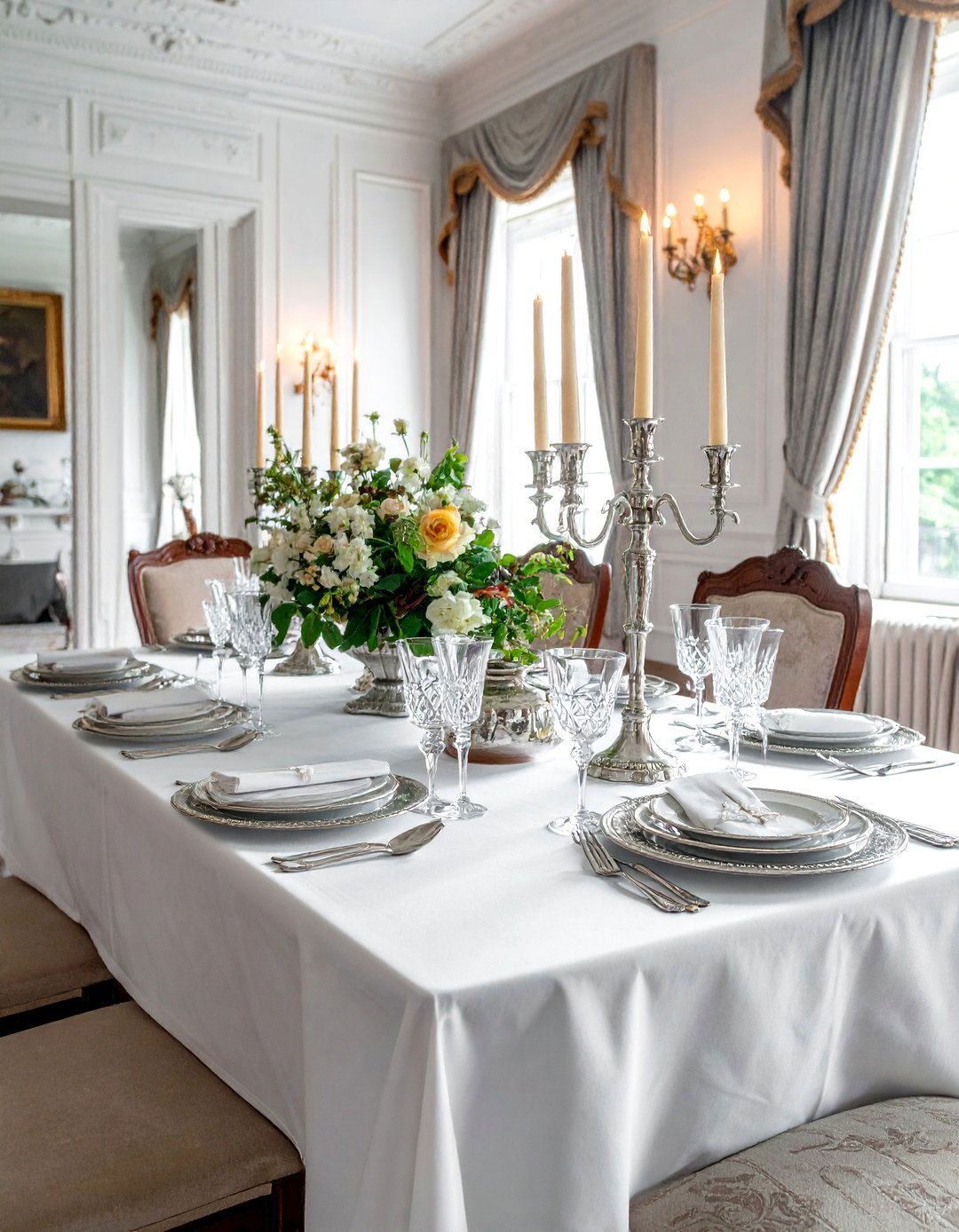
The Victorian dining experience was one of great ceremony, and the table setting was a key part of the display. A collection of polished silver and fine crystal tableware is essential for achieving an authentic look. Ornate silver cutlery, serving platters, candelabras, and a tea service would have been proudly displayed and used. The sparkle of silver and the clarity of cut crystal against a crisp linen tablecloth create a stunning contrast with the dark wood of the table. This attention to detail in the table setting elevates the dining experience, reflecting the era's emphasis on formality, etiquette, and showcasing personal wealth.
16. Victorian Dining Room with Gothic Revival Details
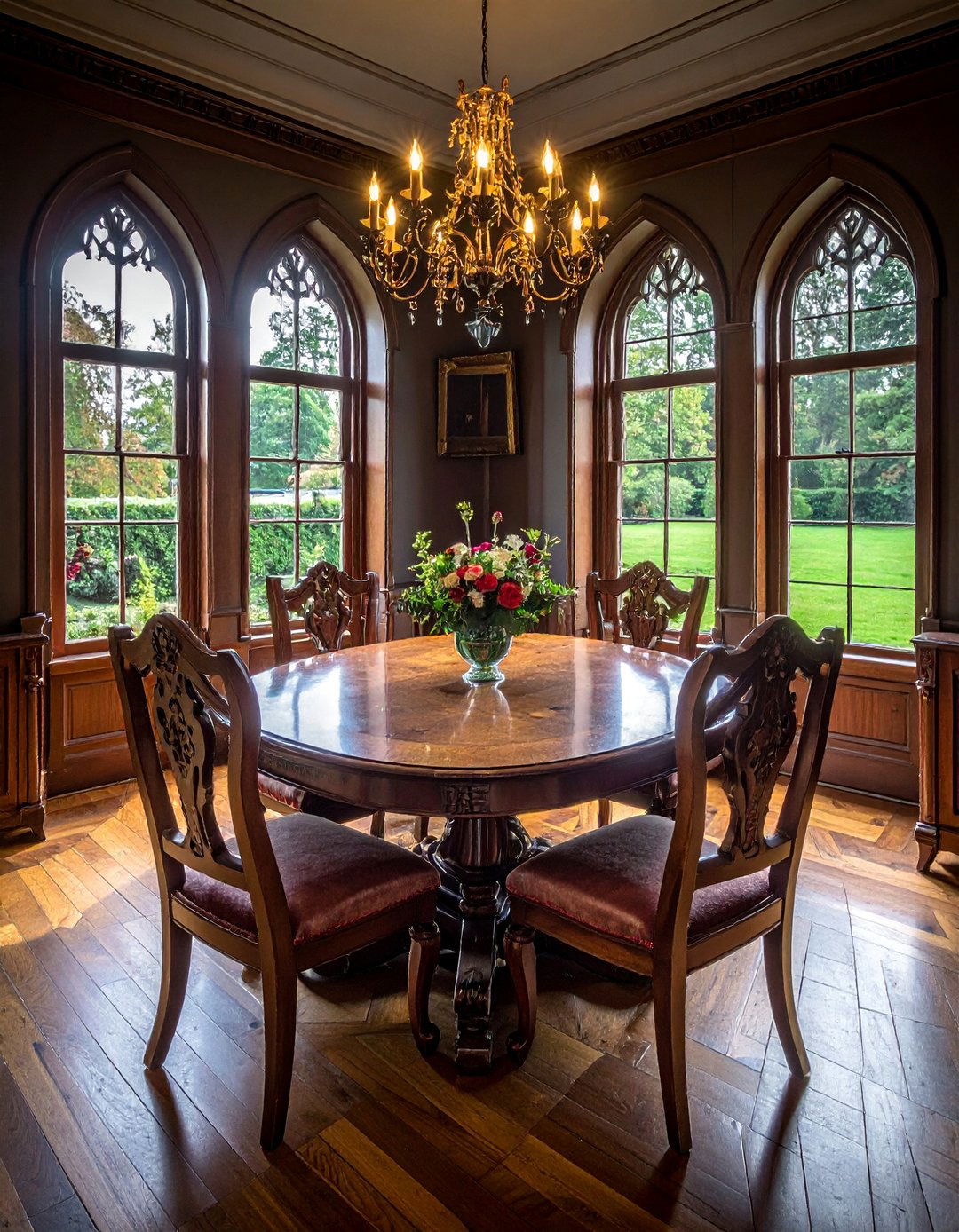
For a more dramatic and imposing Victorian aesthetic, incorporate elements of the Gothic Revival style. This sub-style was popular during the Victorian era and is characterized by architectural details inspired by medieval cathedrals. Think pointed arches in doorways or on the backs of chairs, quatrefoil motifs carved into furniture, and darker, more somber color palettes. A dining set with intricately carved, cathedral-like details can become a powerful focal point. This style adds a sense of history, mystery, and architectural grandeur to the dining room, creating a space that feels both timeless and deeply rooted in a rich design tradition.
17. Victorian Dining Room with Lush Indoor Plants
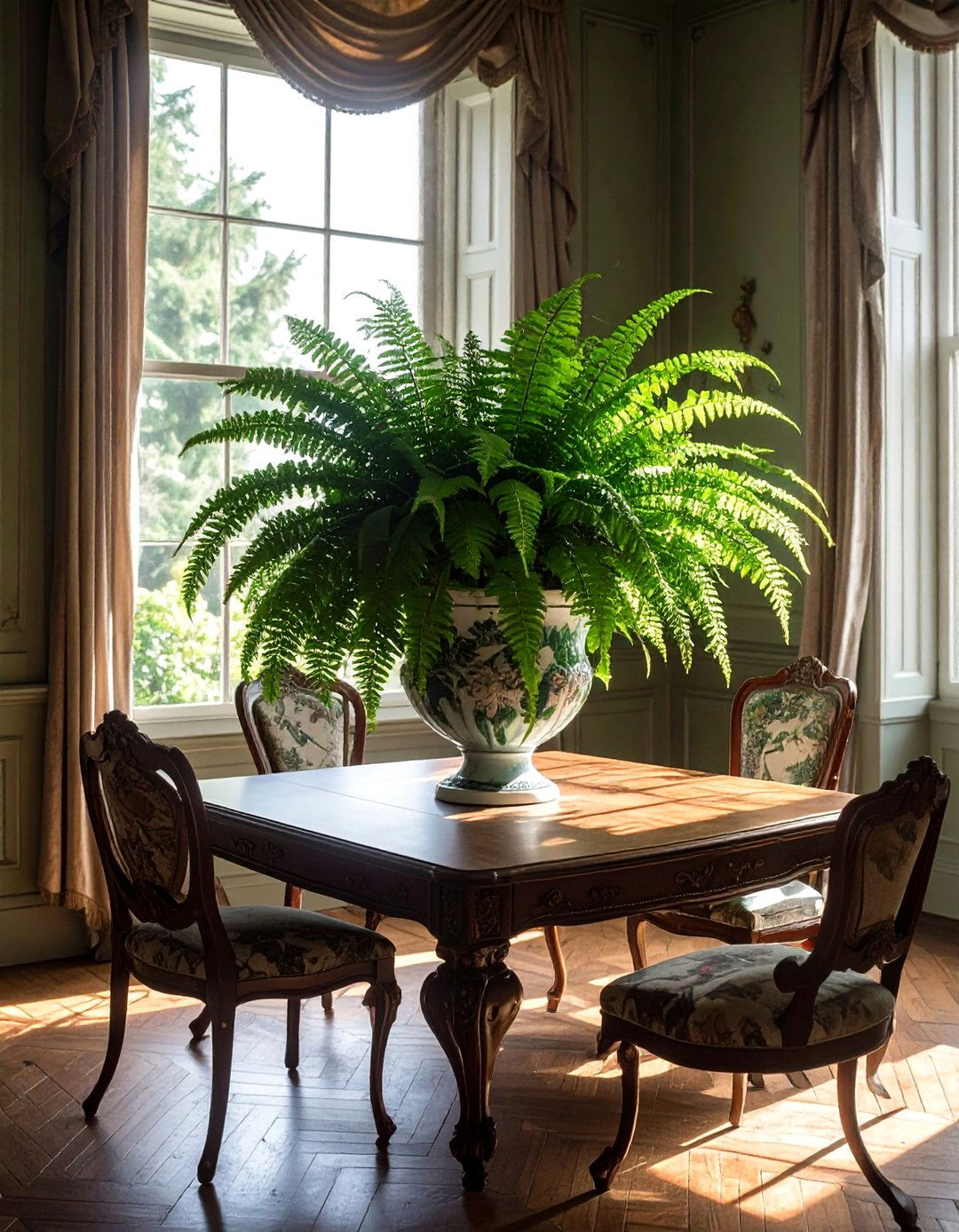
Victorians had a fascination with botany and the natural world, a trend known as "Pteridomania" or fern fever. Bringing lush, green indoor plants into the dining room is a historically accurate way to add life and a touch of the exotic. Large potted ferns, palms, or aspidistras were commonly placed in ornate planters or jardinières in the corners of a room or near a window. These plants provide a beautiful organic contrast to the dark, heavy furniture and rich textiles. Their vibrant green foliage helps to soften the formality of the space, adding a refreshing and natural element to the overall opulent decor.
18. Victorian Dining Room with a Butler's Pantry
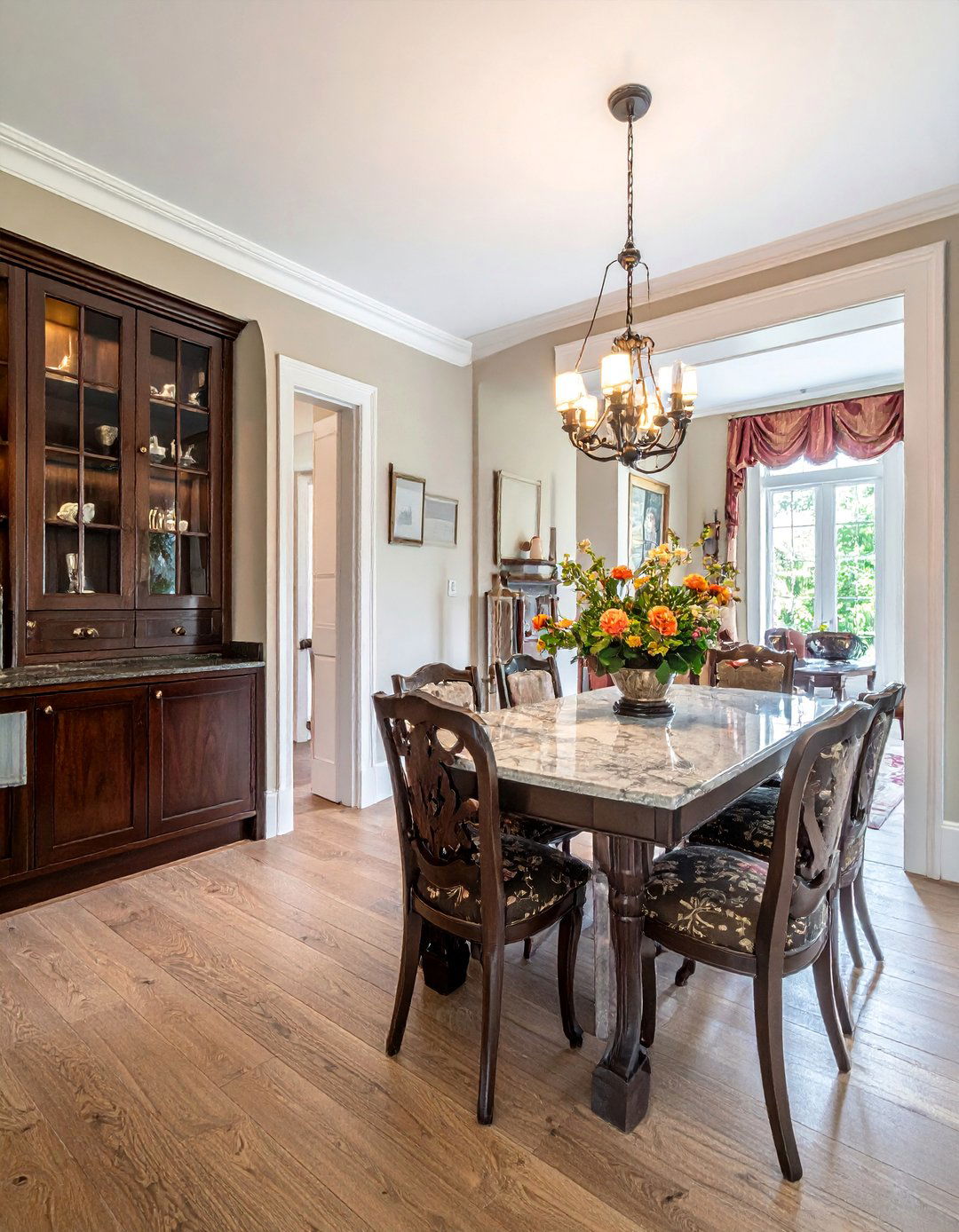
For a truly authentic and functional grand dining space, consider the addition of a built-in butler's pantry. Historically, this small room or large alcove situated between the kitchen and dining room was used for storing and polishing silver, plating food, and keeping serving dishes. Incorporating a modern version with custom cabinetry, a countertop, and storage for fine china and linens can elevate your entertaining capabilities. Painted in a color that complements the dining room, it serves as a seamless extension of the space, enhancing its functionality while maintaining the period's emphasis on organized, formal service and hospitality.
19. Victorian Dining Room with Stained Glass Windows
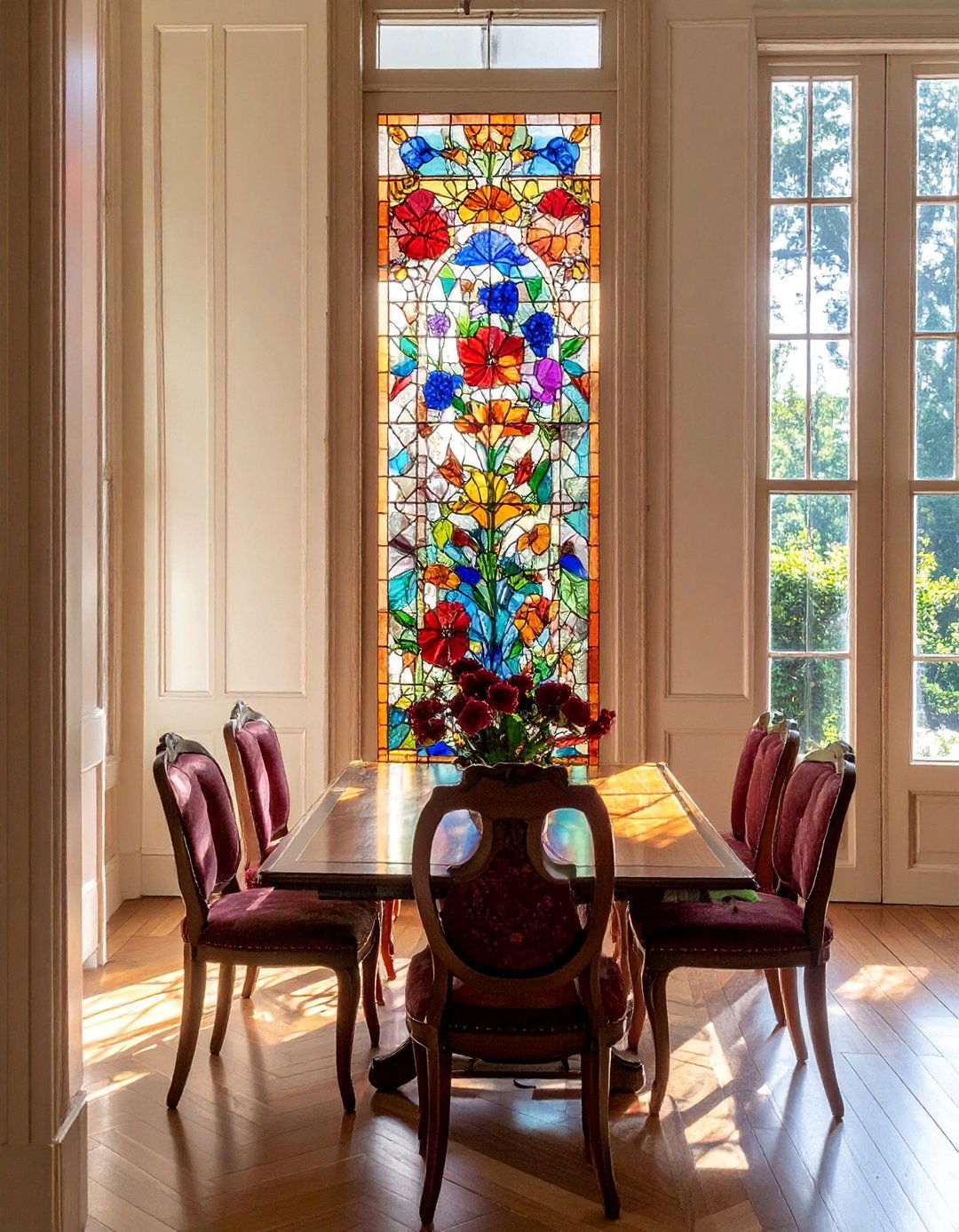
Stained glass was a popular decorative feature in Victorian architecture, and incorporating it into a dining room adds a unique element of color and artistry. If original stained glass windows are not present, you can add decorative panels that fit inside the existing window frames or hang them as art pieces. These windows often feature intricate floral, geometric, or narrative scenes in rich jewel tones. As sunlight streams through, it casts colorful, dappled light across the room, creating a magical and ever-changing ambiance. This feature adds a layer of bespoke craftsmanship that is emblematic of the Victorian love for detailed ornamentation.
20. Victorian Dining Room with Polished Hardwood Floors
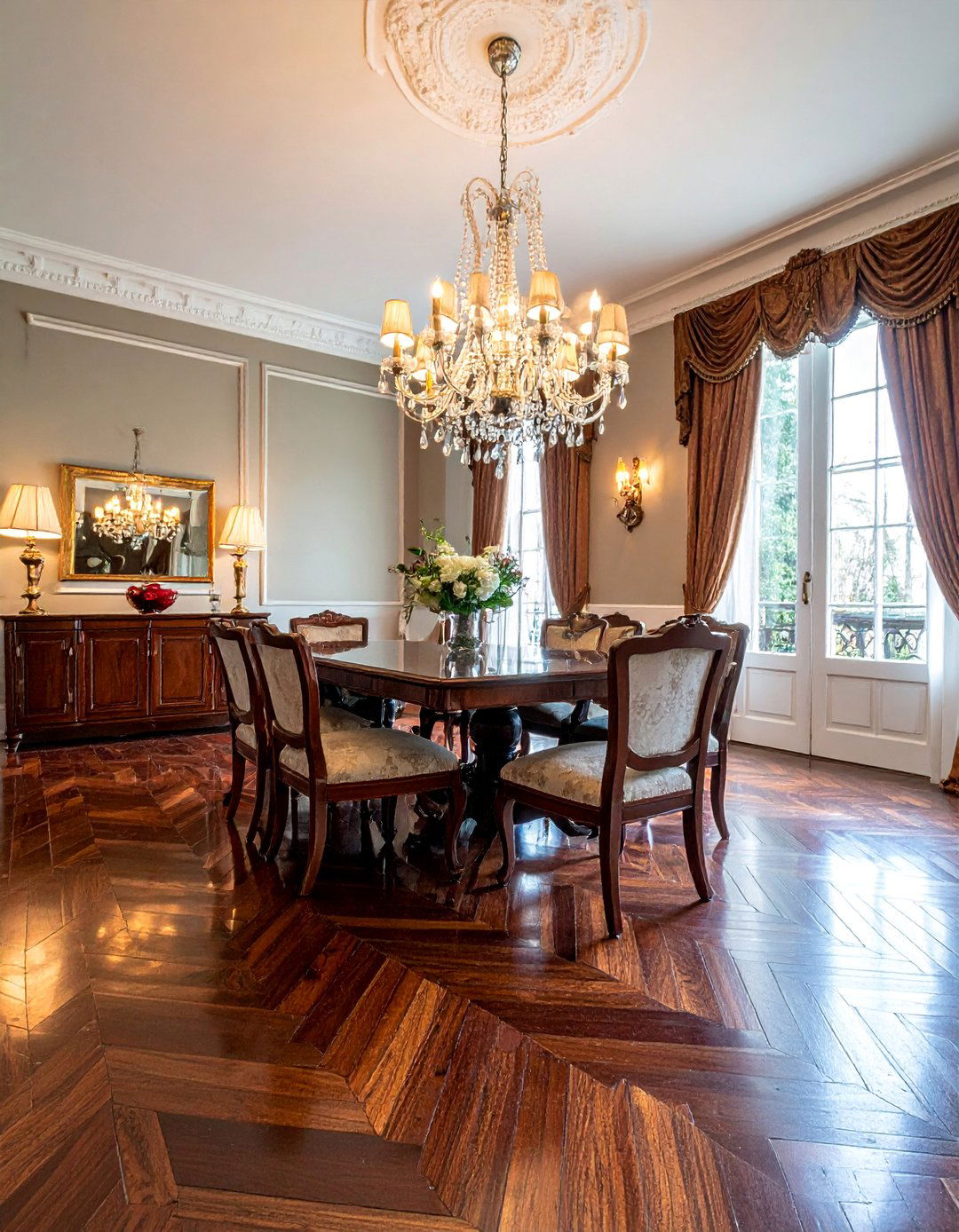
The foundation of a classic Victorian dining room is a dark, polished hardwood floor. Woods like oak, walnut, or mahogany were commonly used, often laid in simple plank patterns or more intricate parquet designs like herringbone. The deep, rich tones of the wood provide a perfect base for the heavy furniture and help to ground the room's opulent decor. A high-gloss finish reflects light from the windows and chandelier, adding a subtle luster to the space. While largely covered by an area rug, the visible borders of the polished wood add a sense of warmth, quality, and timeless elegance to the room's overall design.
21. Victorian Dining Room with a Floral Centerpiece
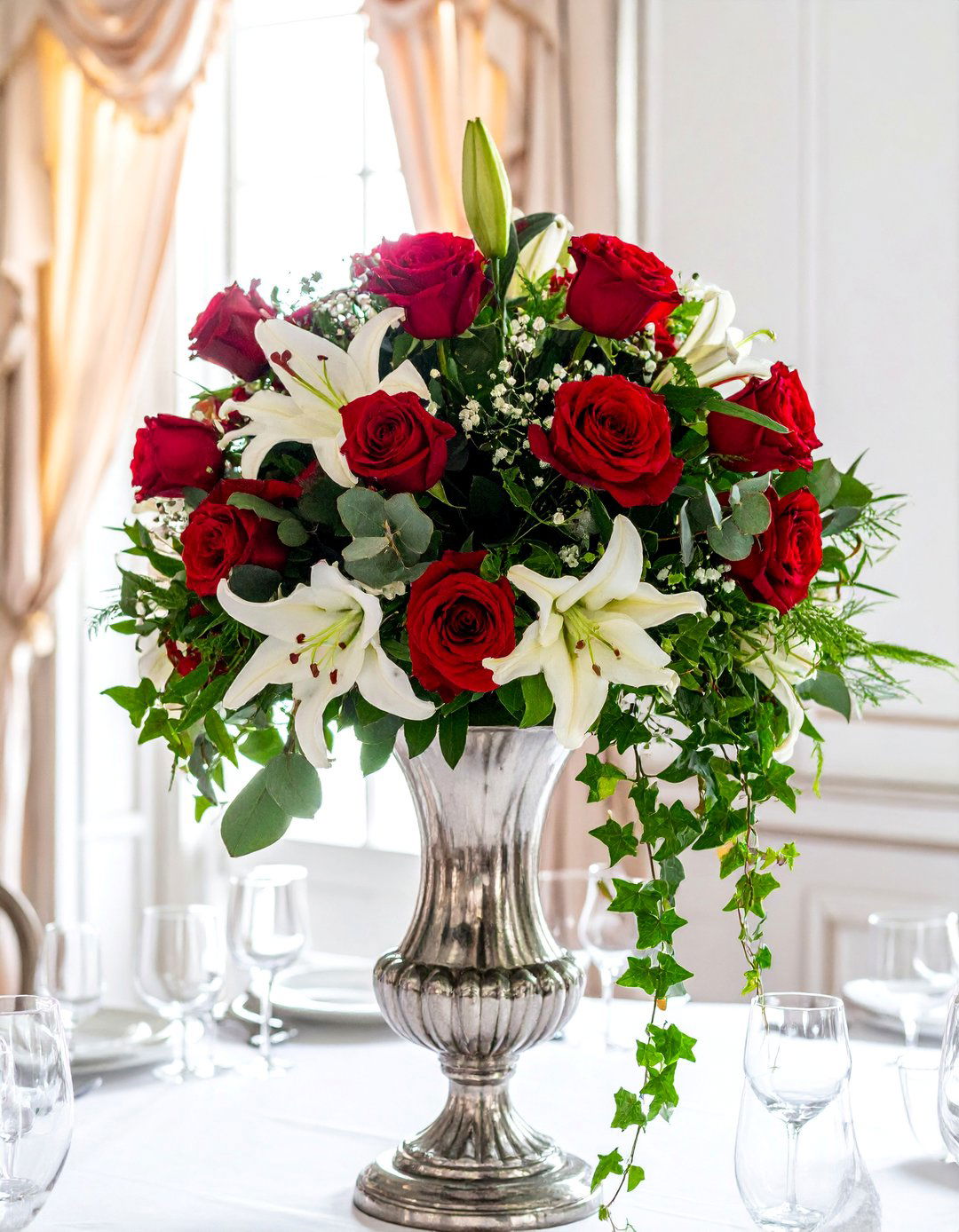
No Victorian dining table would be complete without a lavish, overflowing centerpiece of fresh flowers. Flowers were an essential part of Victorian decor and social customs, with different blooms conveying different meanings. A large, ornate vase or epergne filled with a lush arrangement of roses, lilies, hydrangeas, and trailing greenery adds a touch of natural beauty and vibrant color to the formal setting. This living element softens the room's formality and fills the air with a subtle fragrance. The centerpiece acts as a final decorative flourish, showcasing the host's attention to detail and hospitality for their esteemed guests.
22. Victorian Dining Room with a Patterned Ceiling
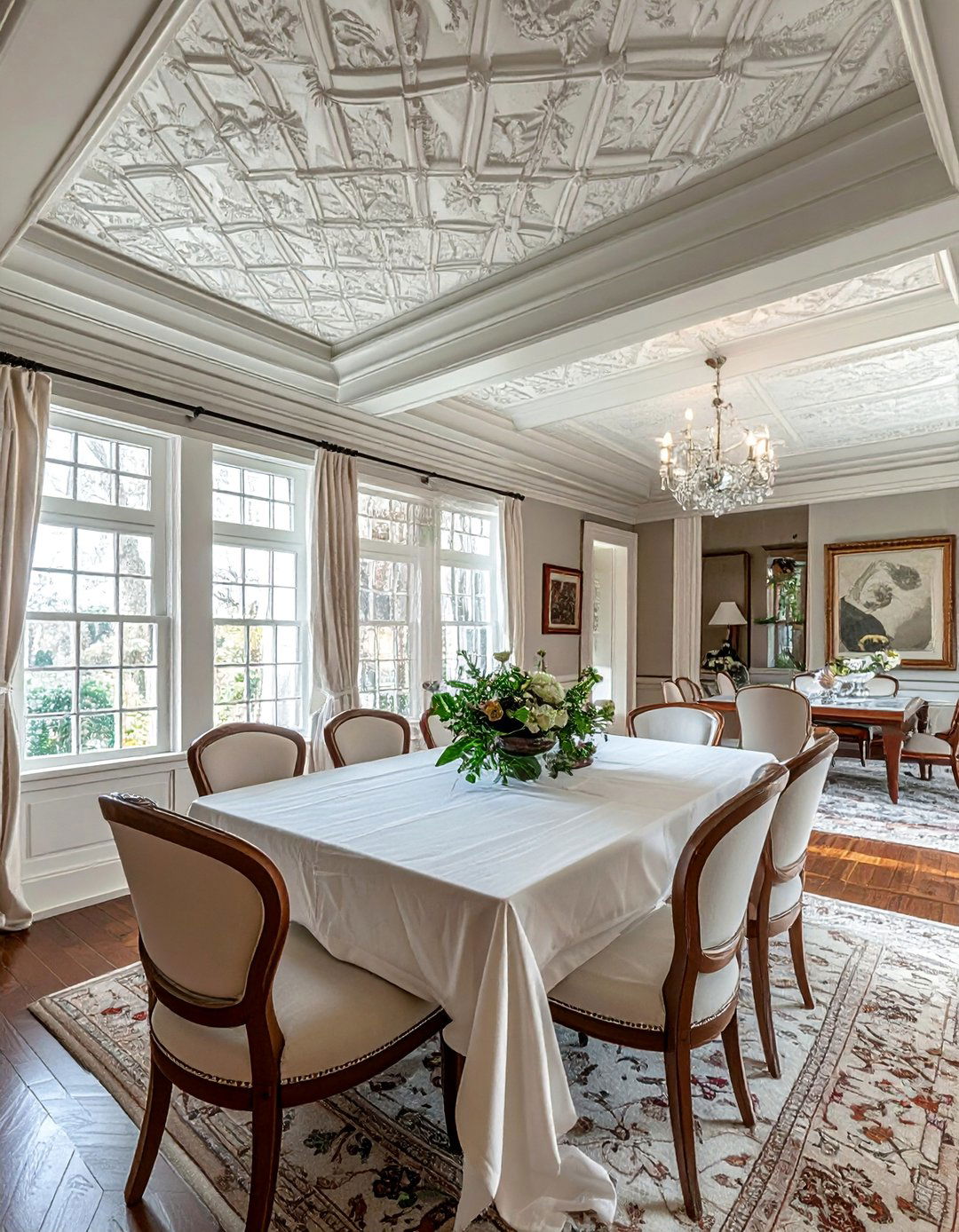
While a ceiling medallion adds a focal point, the Victorians often took ceiling decoration a step further by using patterns. This can be achieved with anaglypta or lincrusta, which are deeply embossed, paintable wallcoverings that create a textural, three-dimensional effect. Applied to the entire ceiling, these materials can feature intricate geometric or floral patterns that mimic ornate plasterwork. Painted in a color that complements the walls—perhaps a lighter shade or a contrasting metallic finish—a patterned ceiling adds an unexpected layer of detail and luxury, ensuring the room is lavishly decorated from top to bottom.
23. Victorian Dining Room with Displayed Curiosities
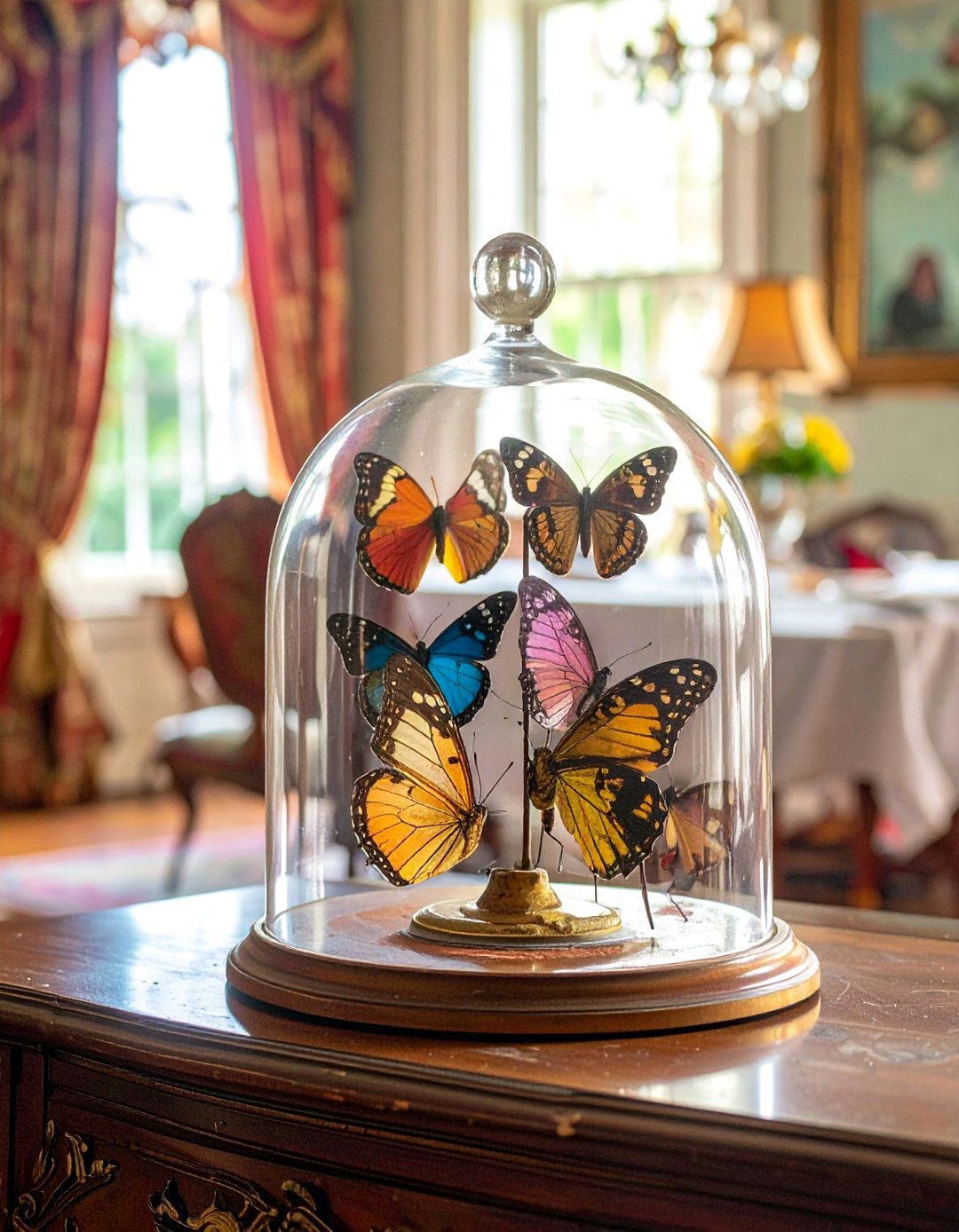
The Victorian era was a time of exploration and collection, and homes often featured displays of natural history specimens and other curiosities. Incorporating this element can add a unique and personal touch to your dining room. A collection of butterflies under a glass dome, a display of antique scientific instruments on the mantel, or framed botanical prints on the wall can serve as fascinating conversation starters. This "cabinet of curiosities" approach reflects the intellectual pursuits of the period and adds a layer of intrigue and personality to the space, making it more than just a room for dining but also a reflection of personal interests.
24. Victorian Dining Room with a Library Combination
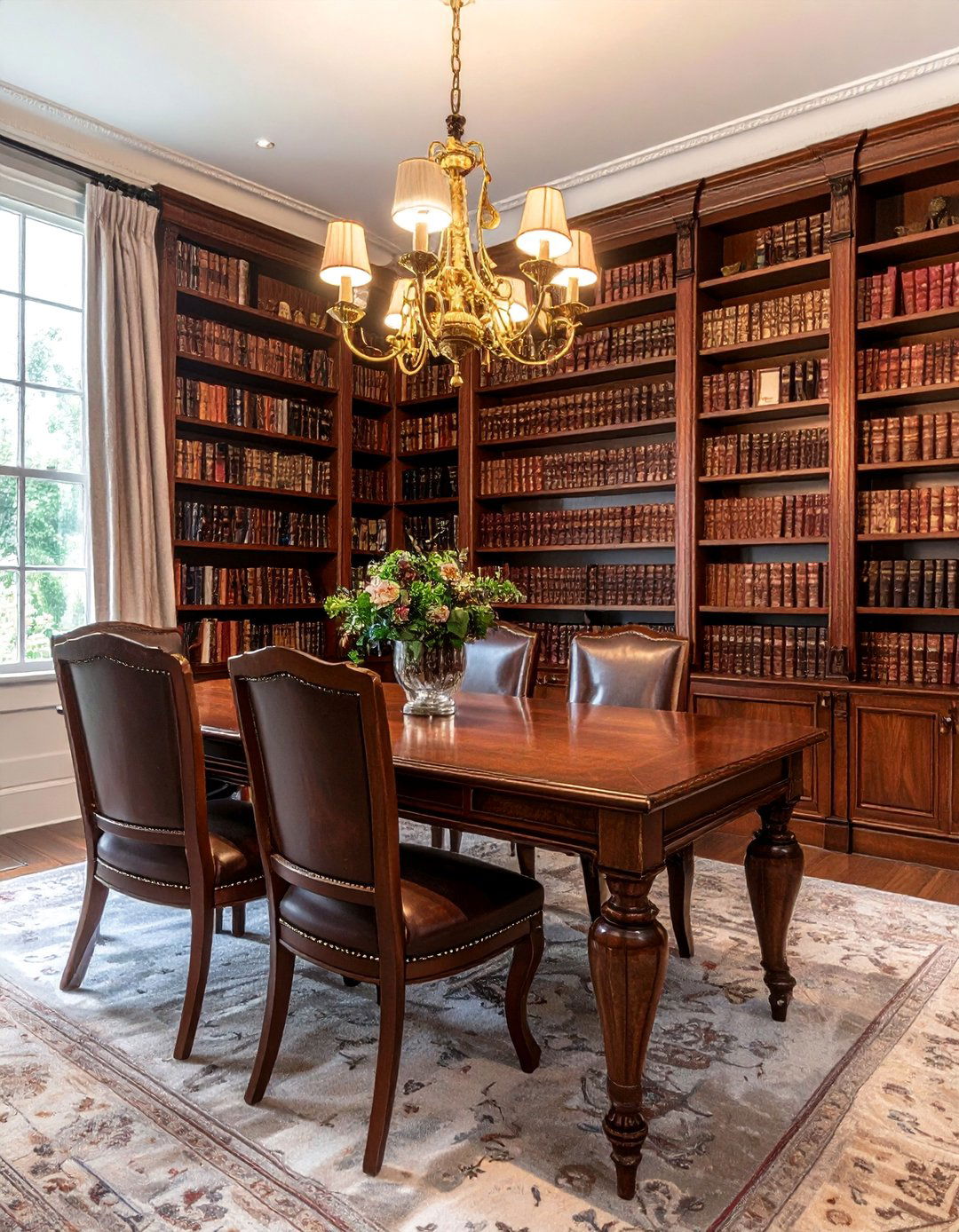
In some larger Victorian homes, the dining room and library were combined into one grand, multifunctional space. This concept can be beautifully adapted today by installing floor-to-ceiling built-in bookshelves along one or more walls. Filled with leather-bound books, these shelves add texture, color, and an intellectual atmosphere to the room. The dark wood of the shelves complements the dining furniture, creating a cohesive and sophisticated look. This combination produces a warm, enveloping, and scholarly ambiance, making the dining room a perfect setting for both lively dinner parties and quiet, contemplative evenings surrounded by classic literature.
25. Victorian Dining Room with Modern Art
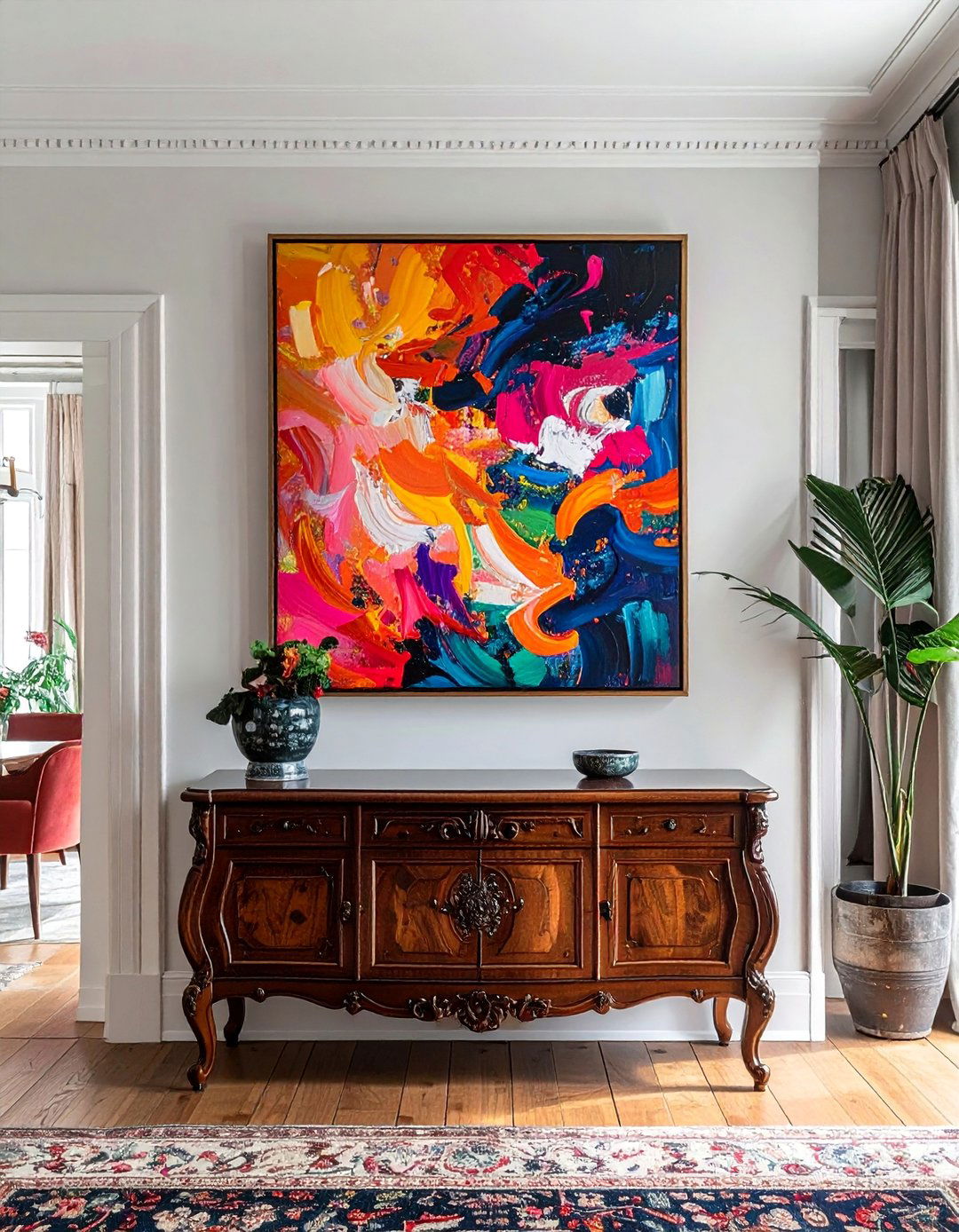
To create a striking and contemporary take on the Victorian style, introduce a piece of bold, modern art. The contrast between a large, abstract painting or a minimalist sculpture and the ornate, historical surroundings can be incredibly powerful. This juxtaposition highlights the beauty of both the old and the new. A vibrant, contemporary canvas hung above a traditional carved sideboard can inject a fresh burst of energy and color into the space, preventing it from feeling like a museum exhibit. This thoughtful blend of periods shows a confident design approach that honors historical character while embracing modern sensibilities.
Conclusion:
Creating a grand Victorian dining room is an exercise in embracing opulence, detail, and formality. By layering rich colors, luxurious textures, and ornate furnishings, you can design a space that is perfect for memorable entertaining. Key elements like a crystal chandelier, a carved mahogany table, and intricate wallpaper set the stage. Whether you adhere strictly to historical accuracy or introduce modern touches, the core principles of drama and sophistication remain. The result is a timeless and elegant dining space that pays homage to an era of unparalleled craftsmanship and grand hospitality, ready for any occasion.

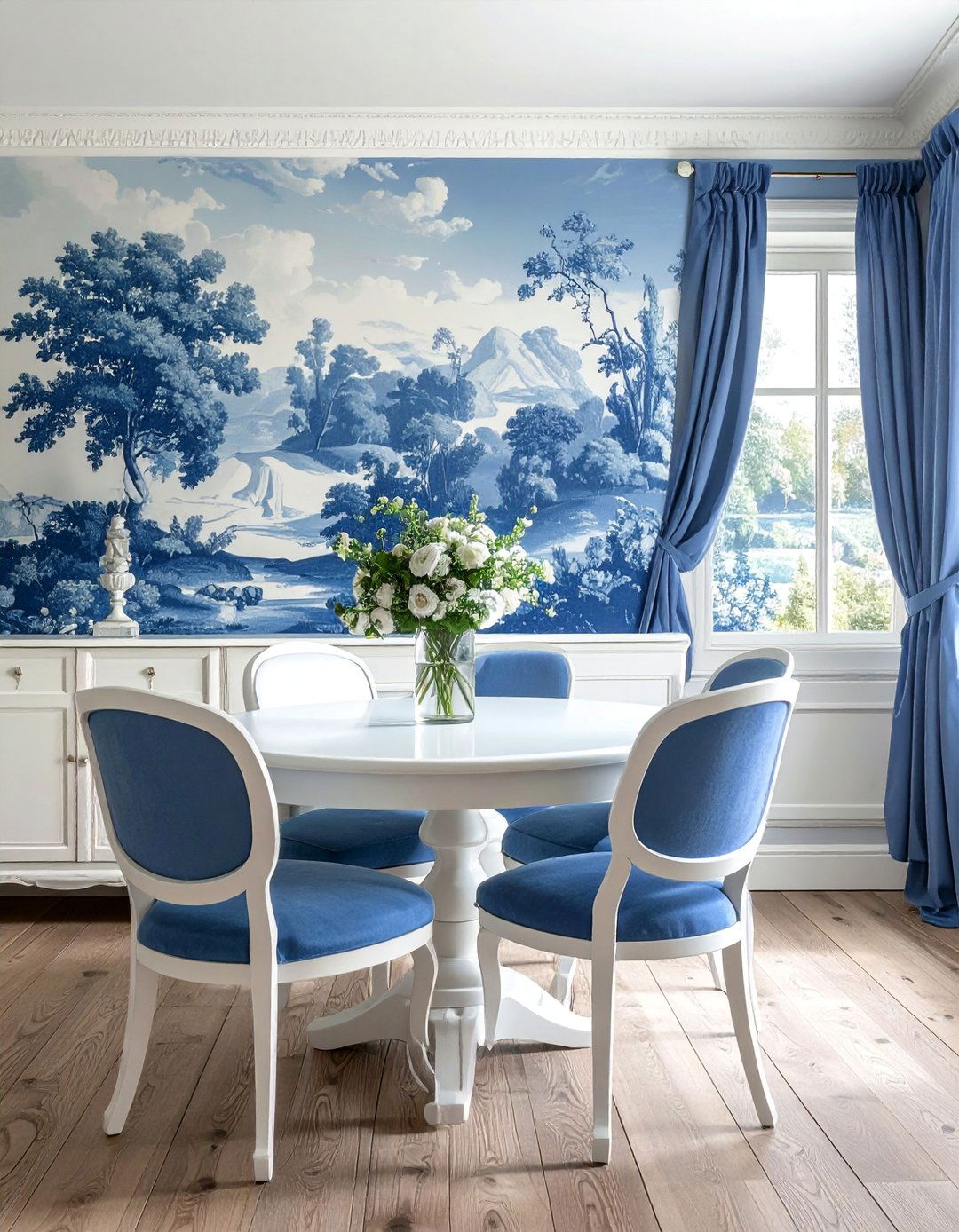
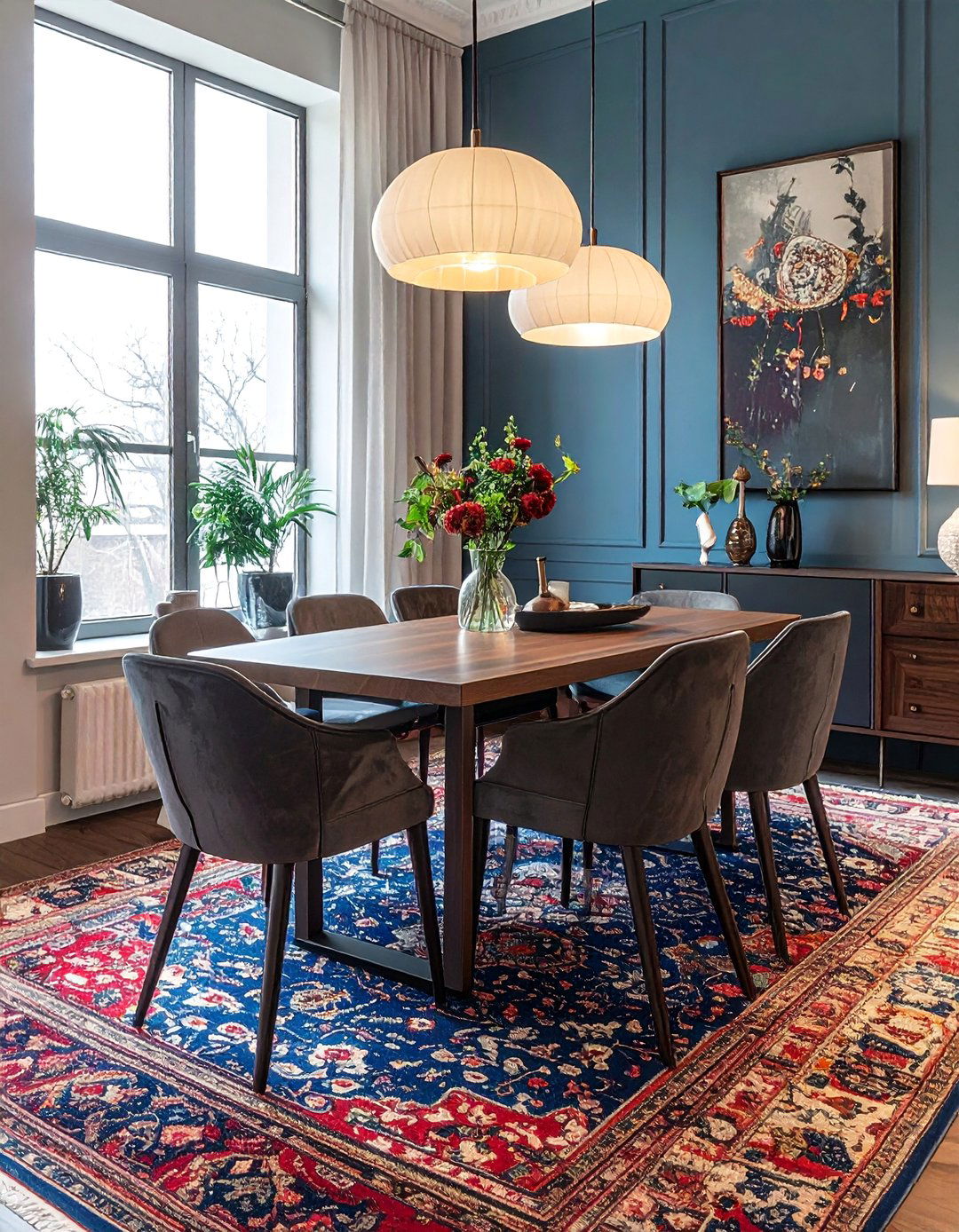
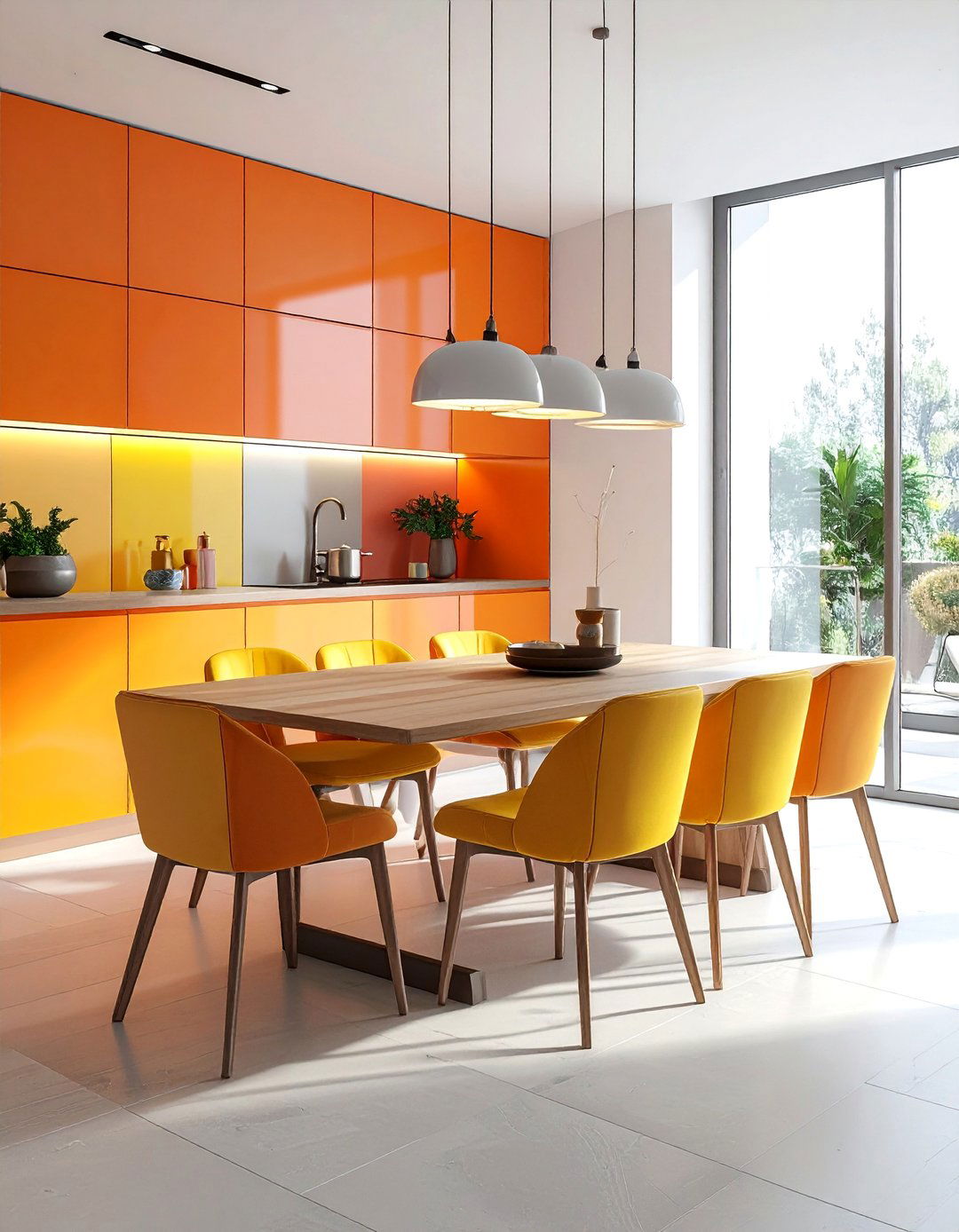
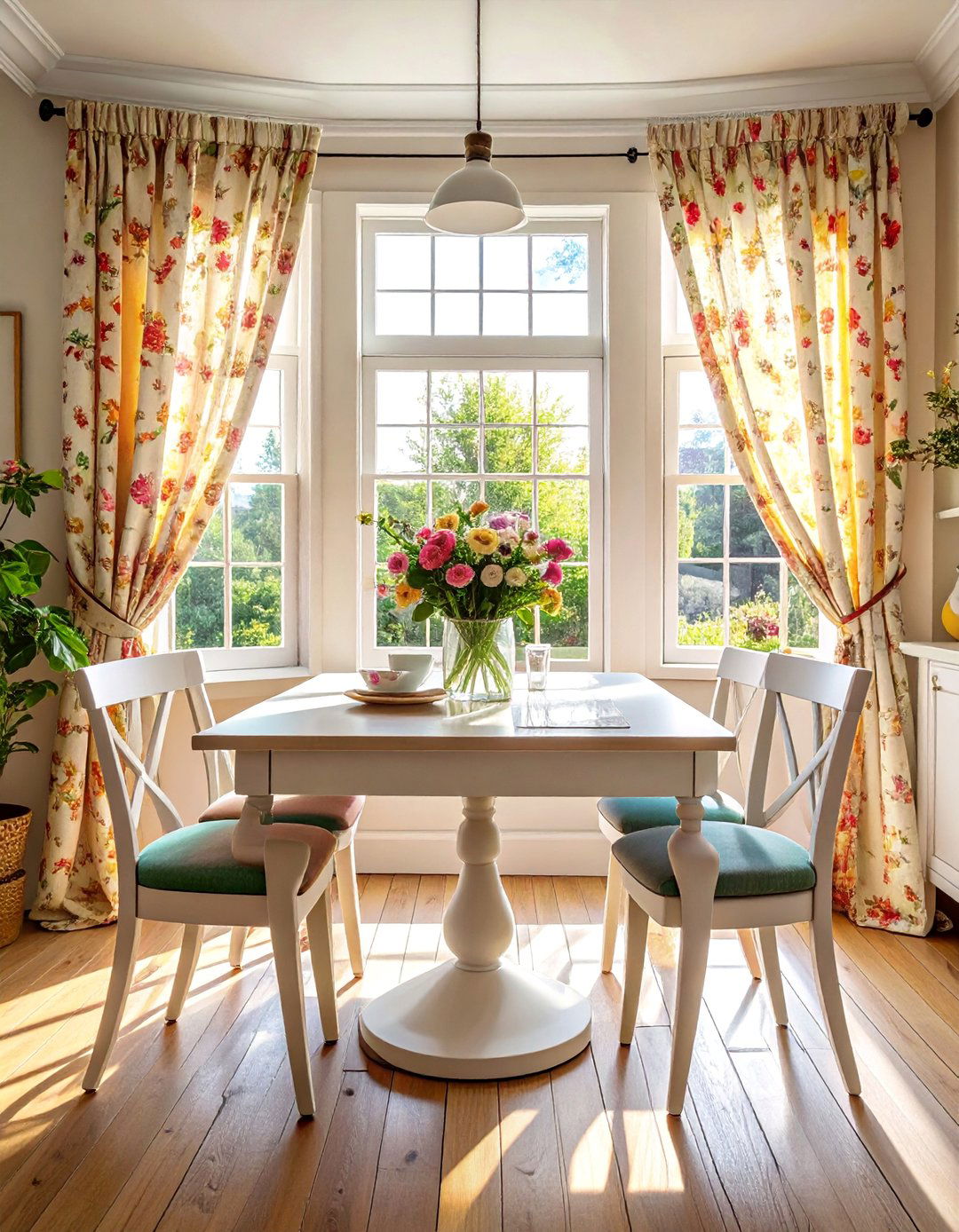
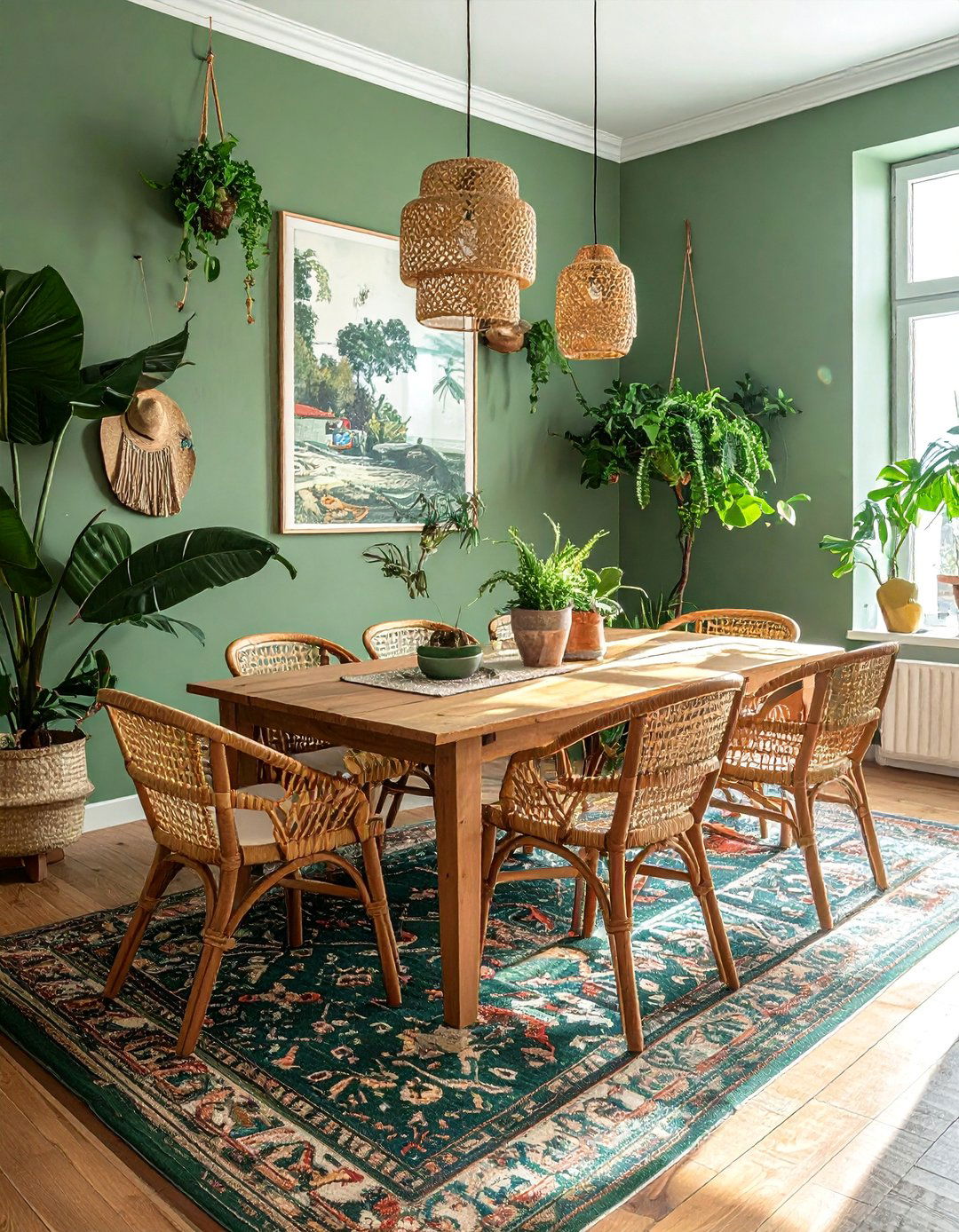
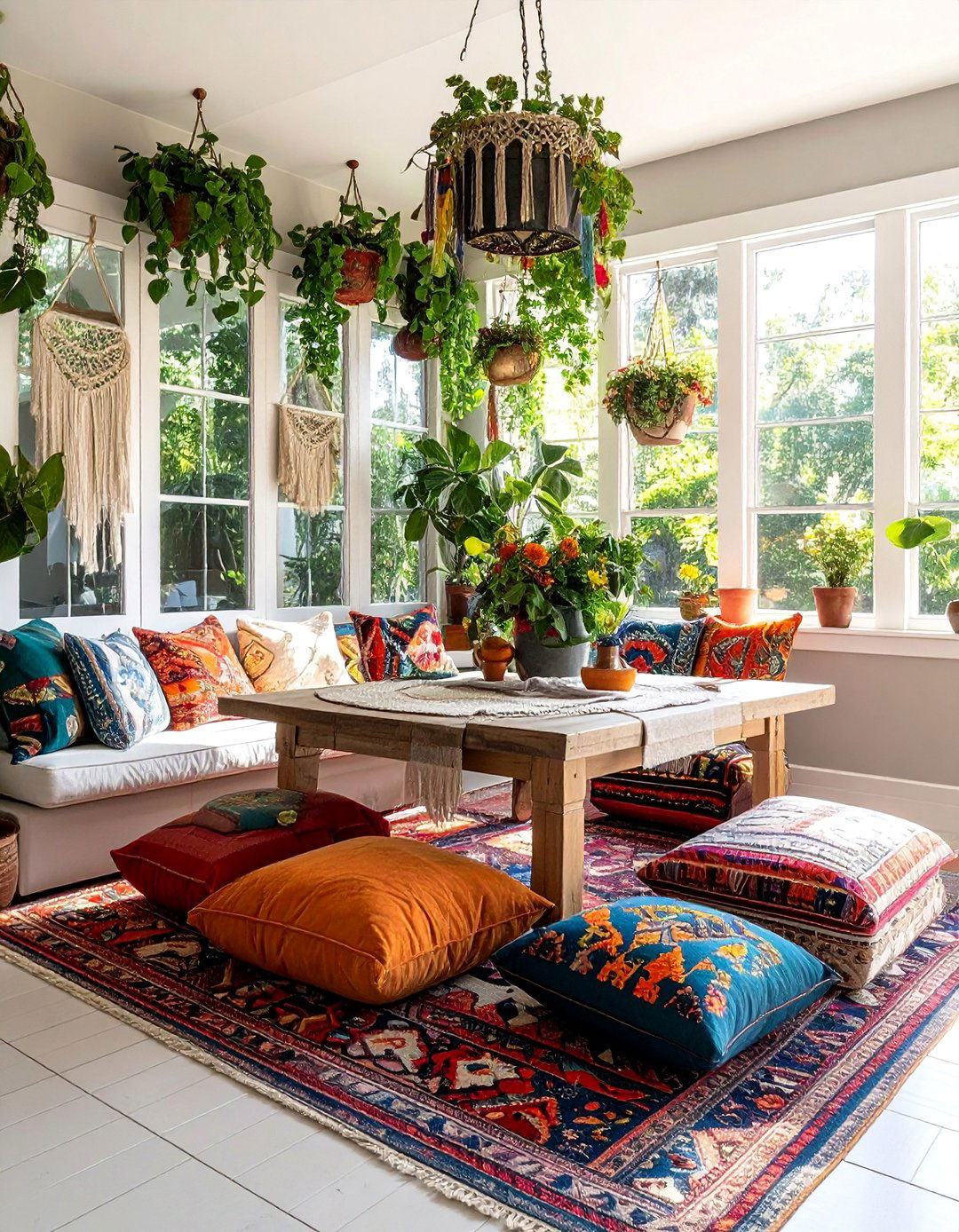
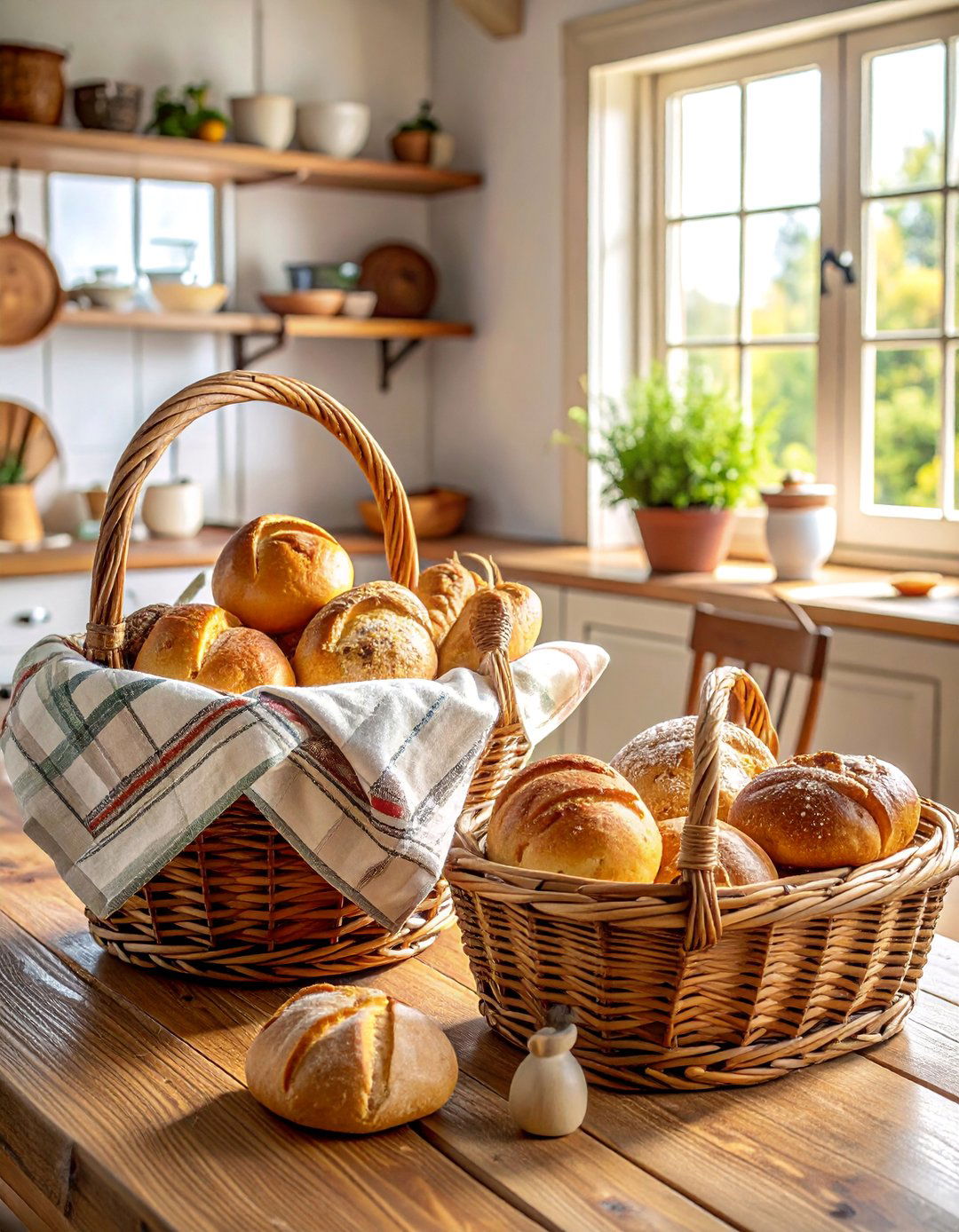
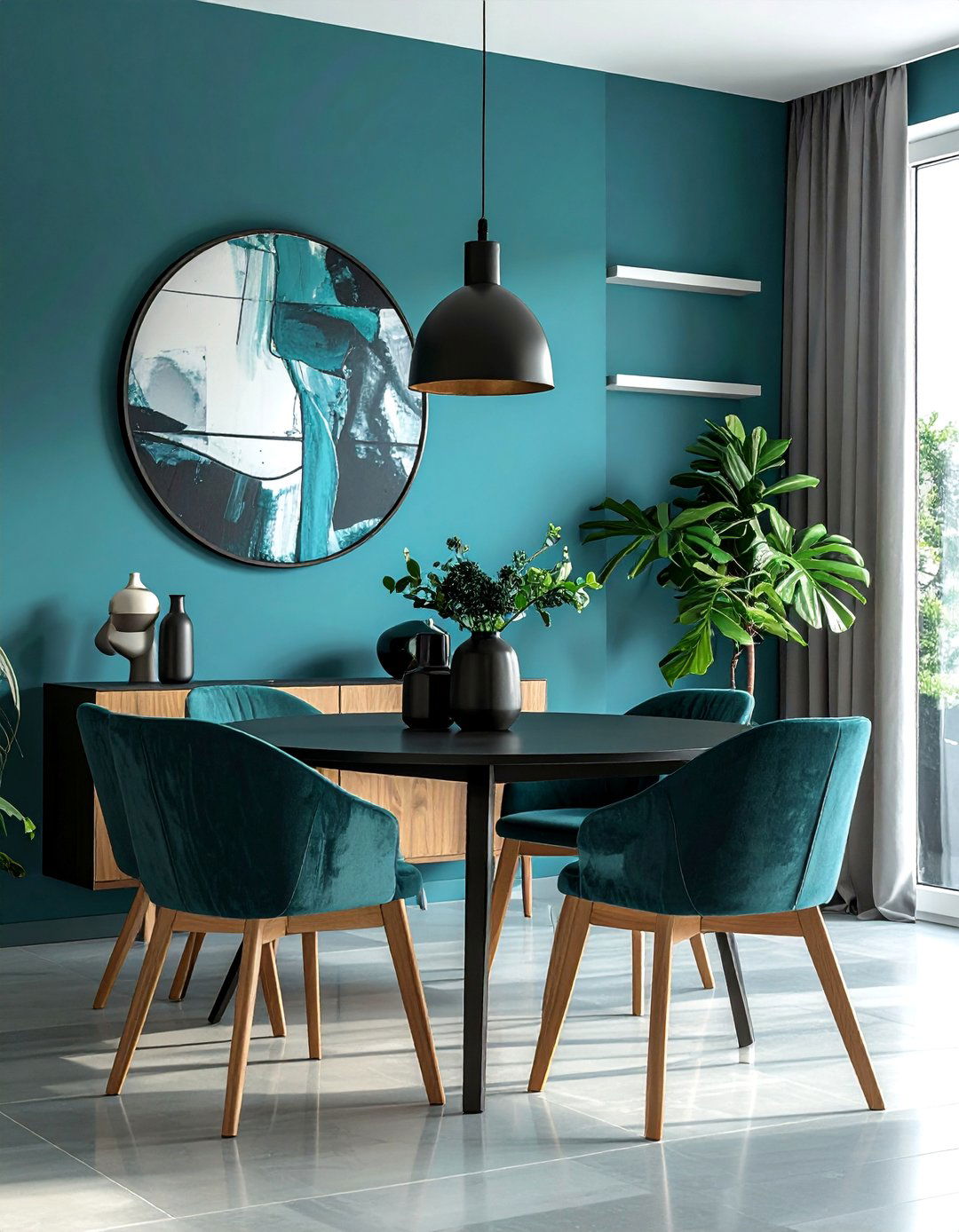
Leave a Reply